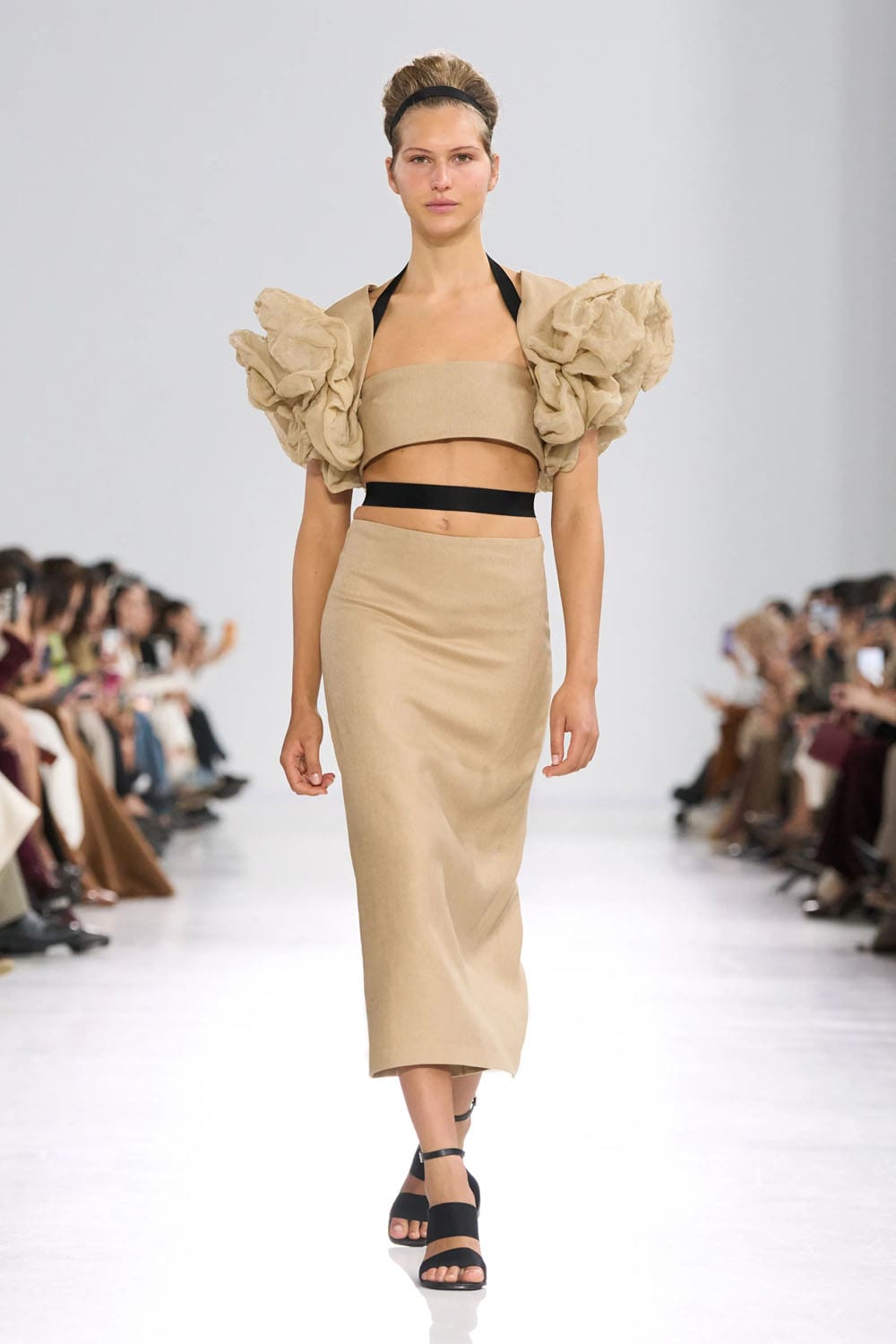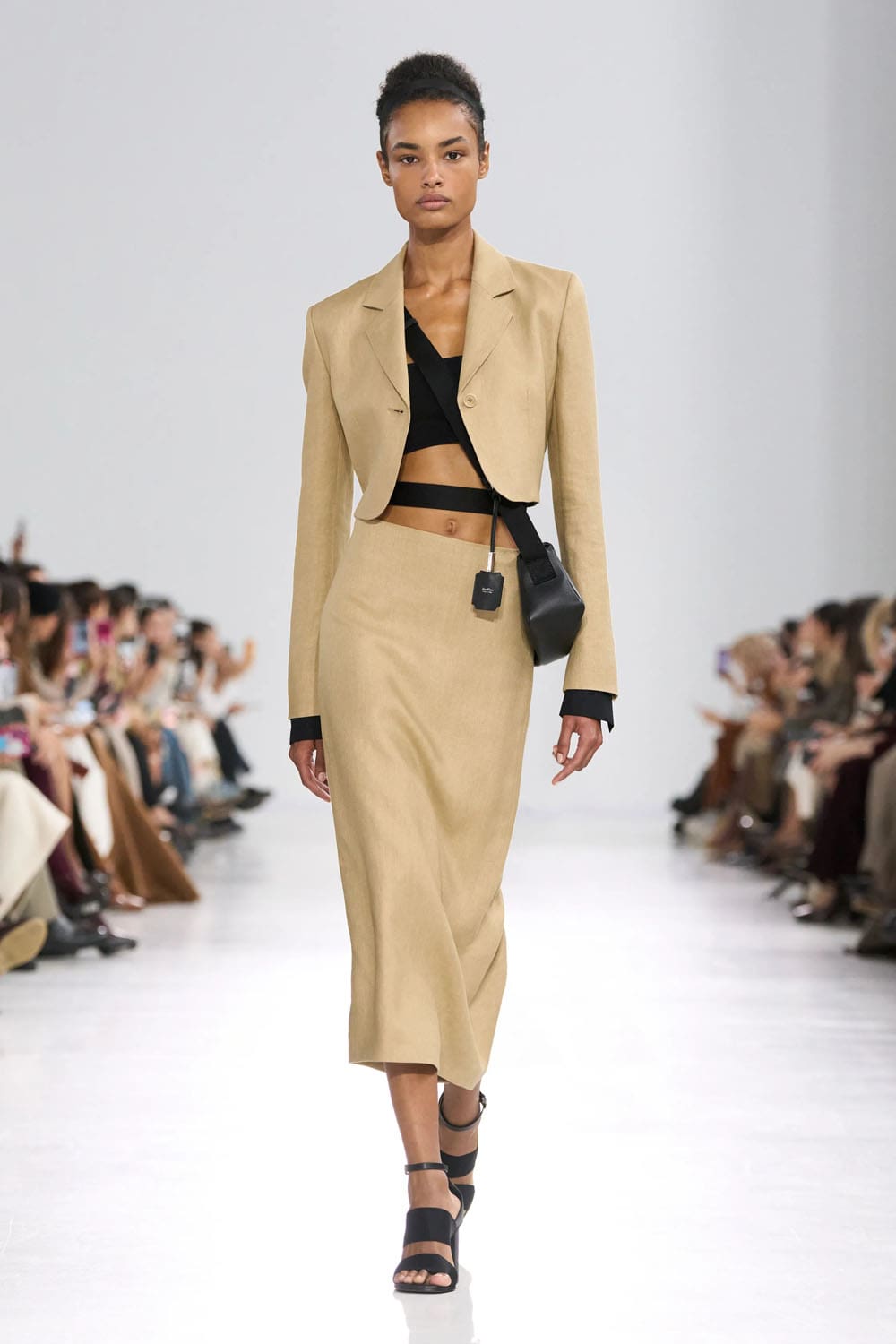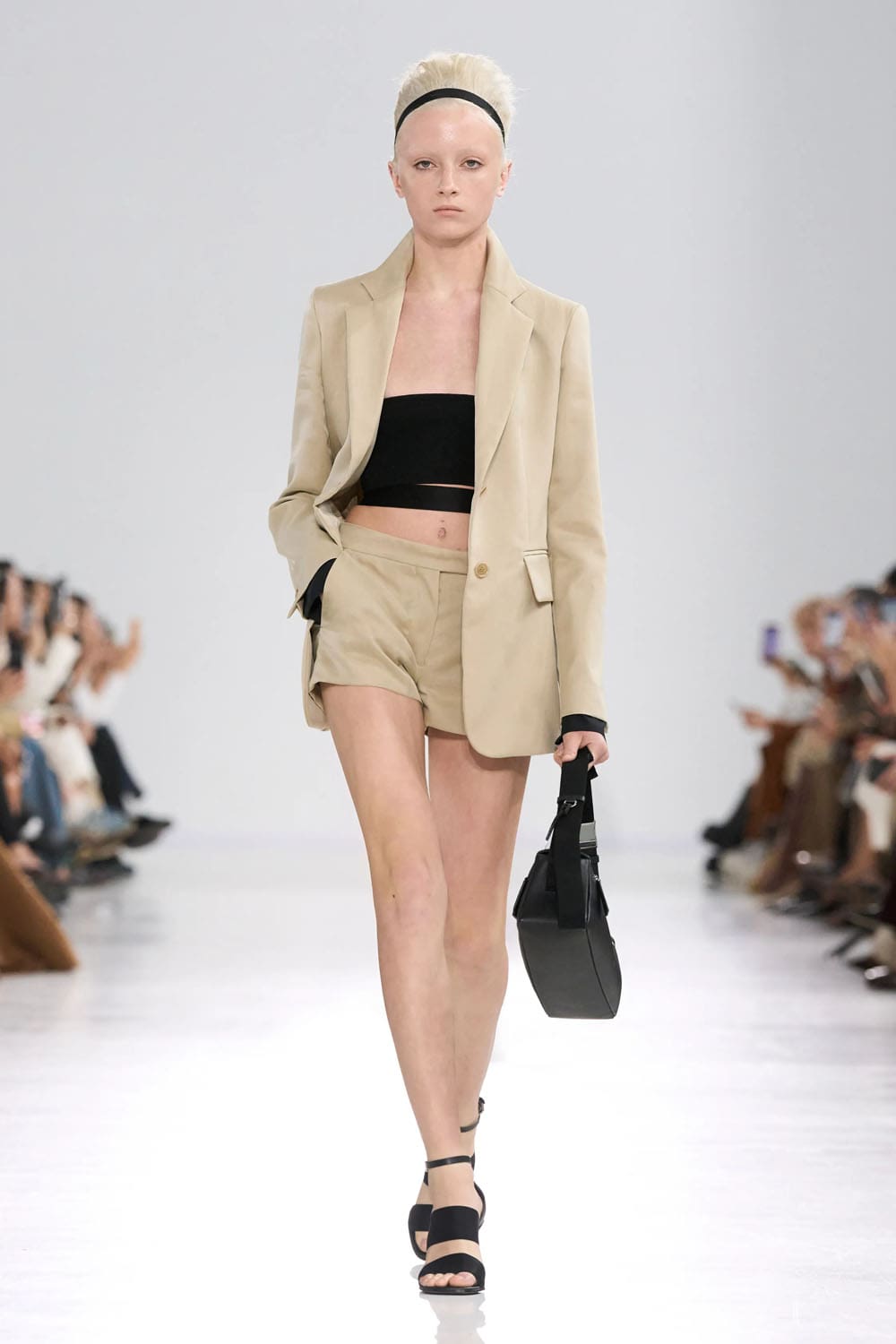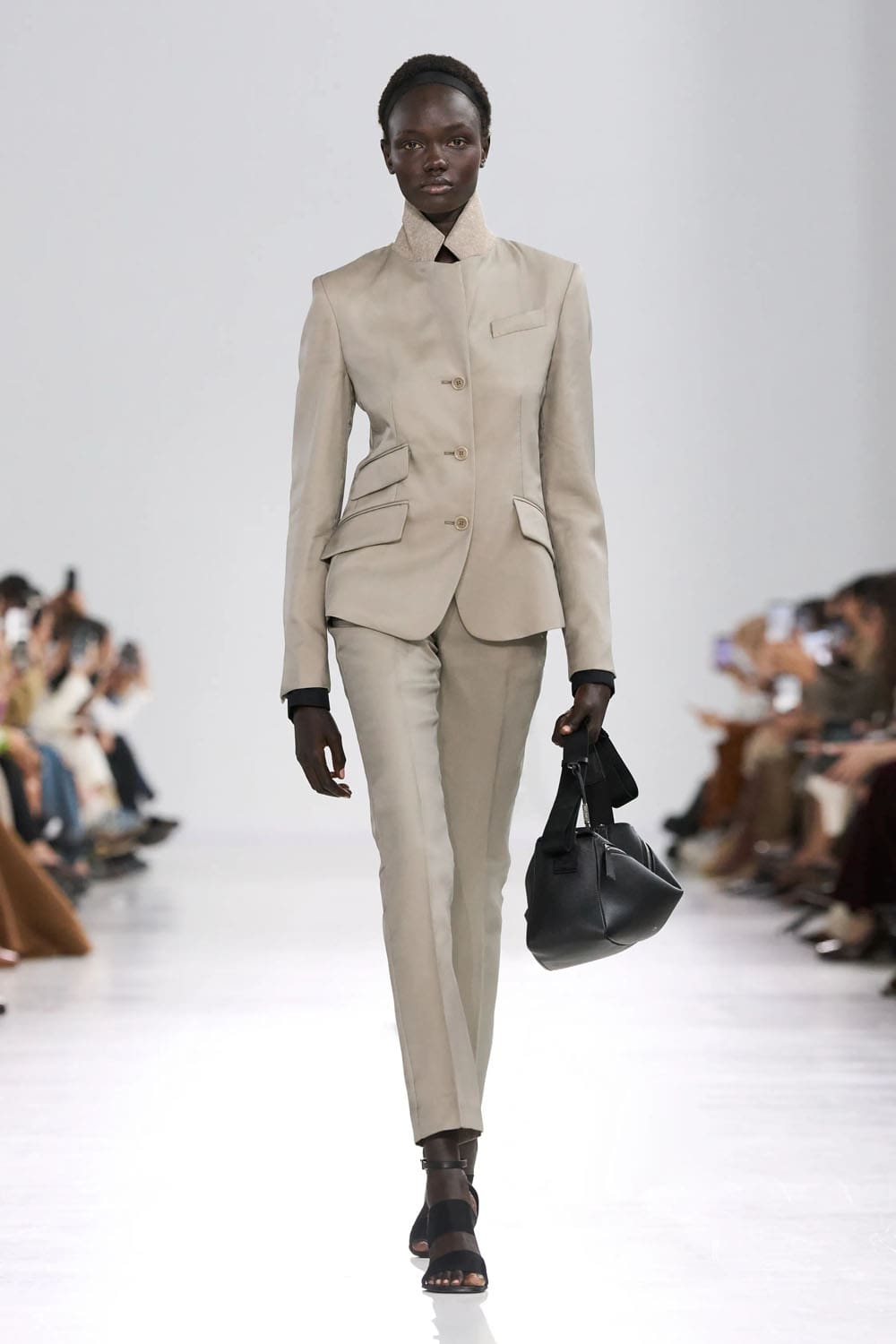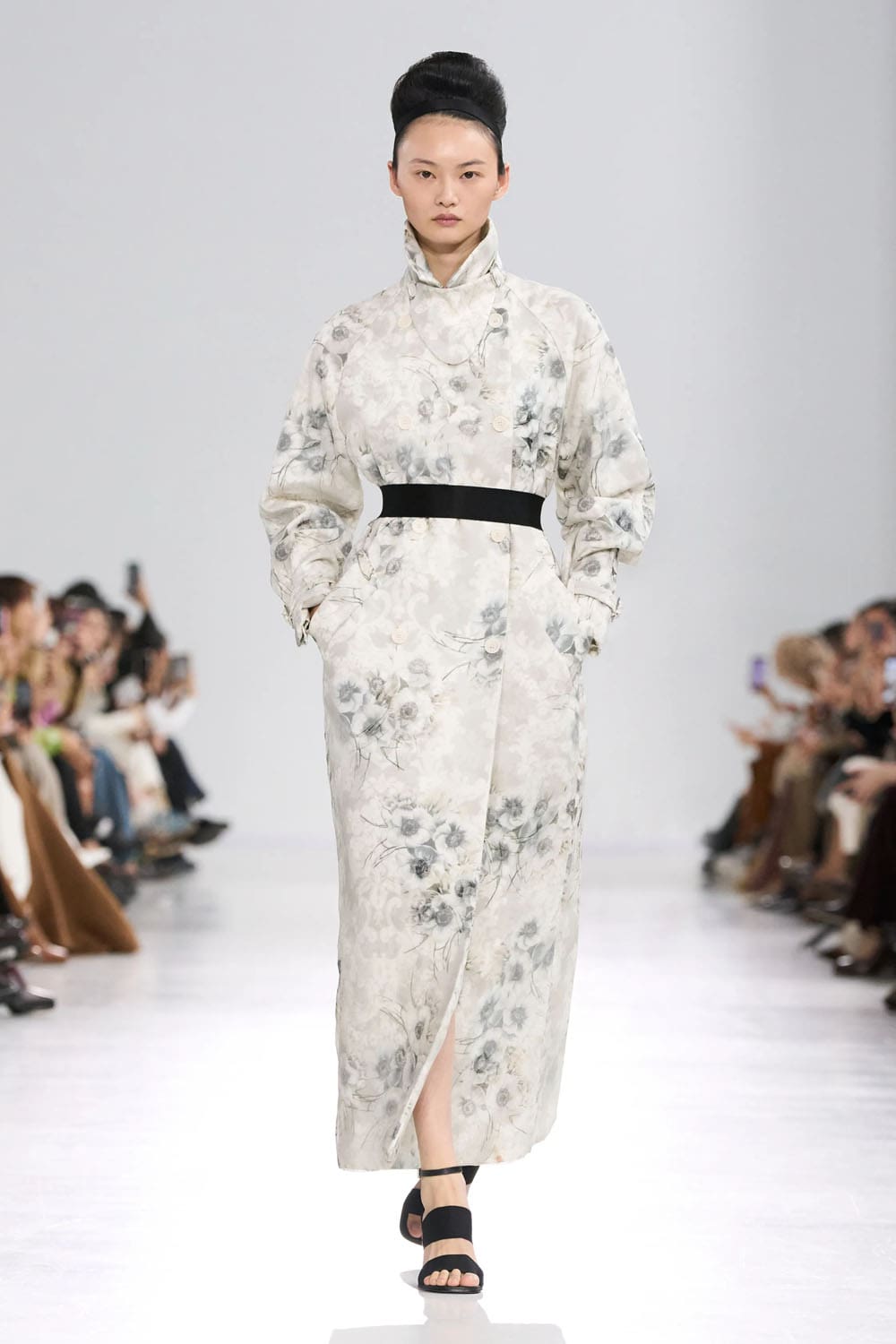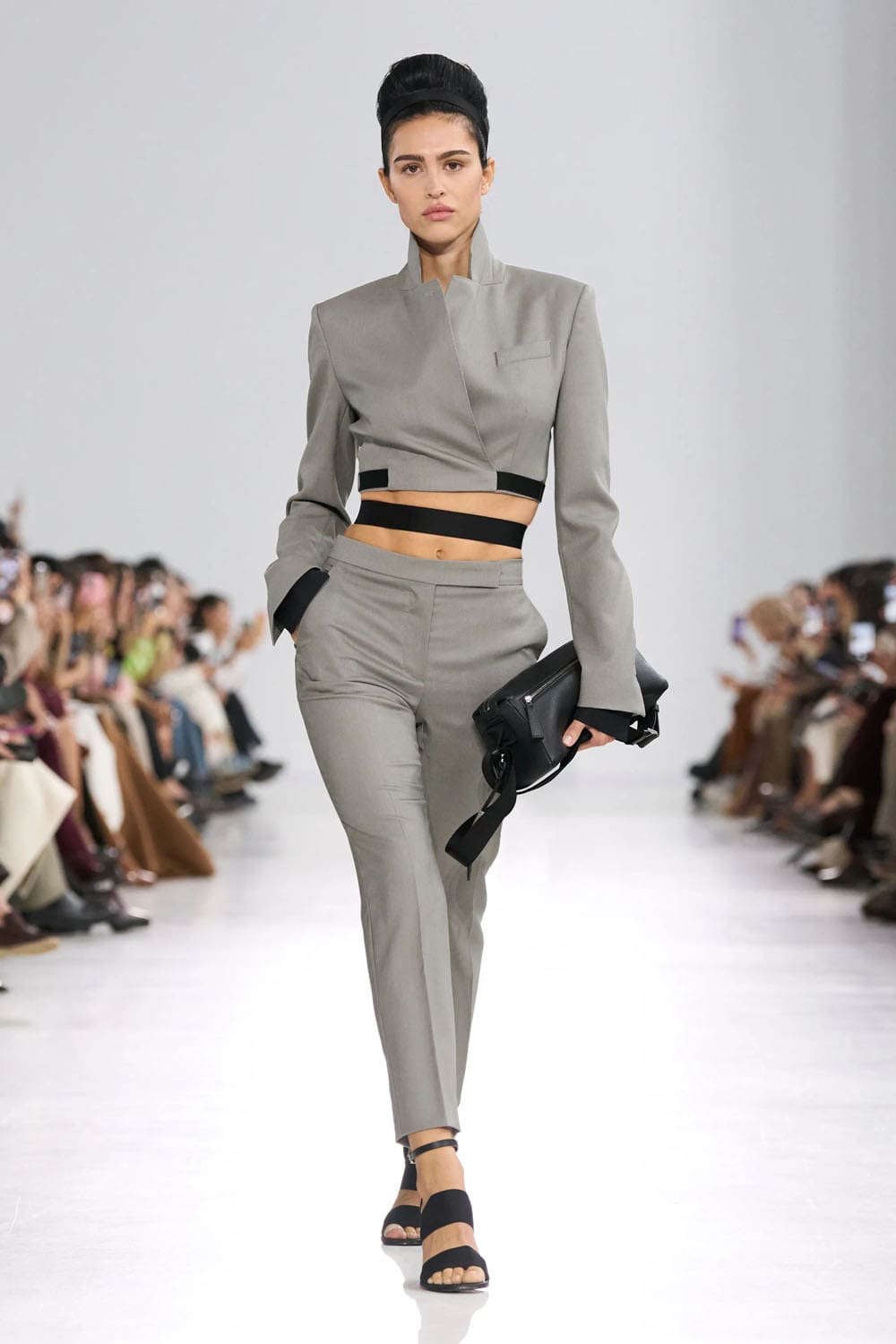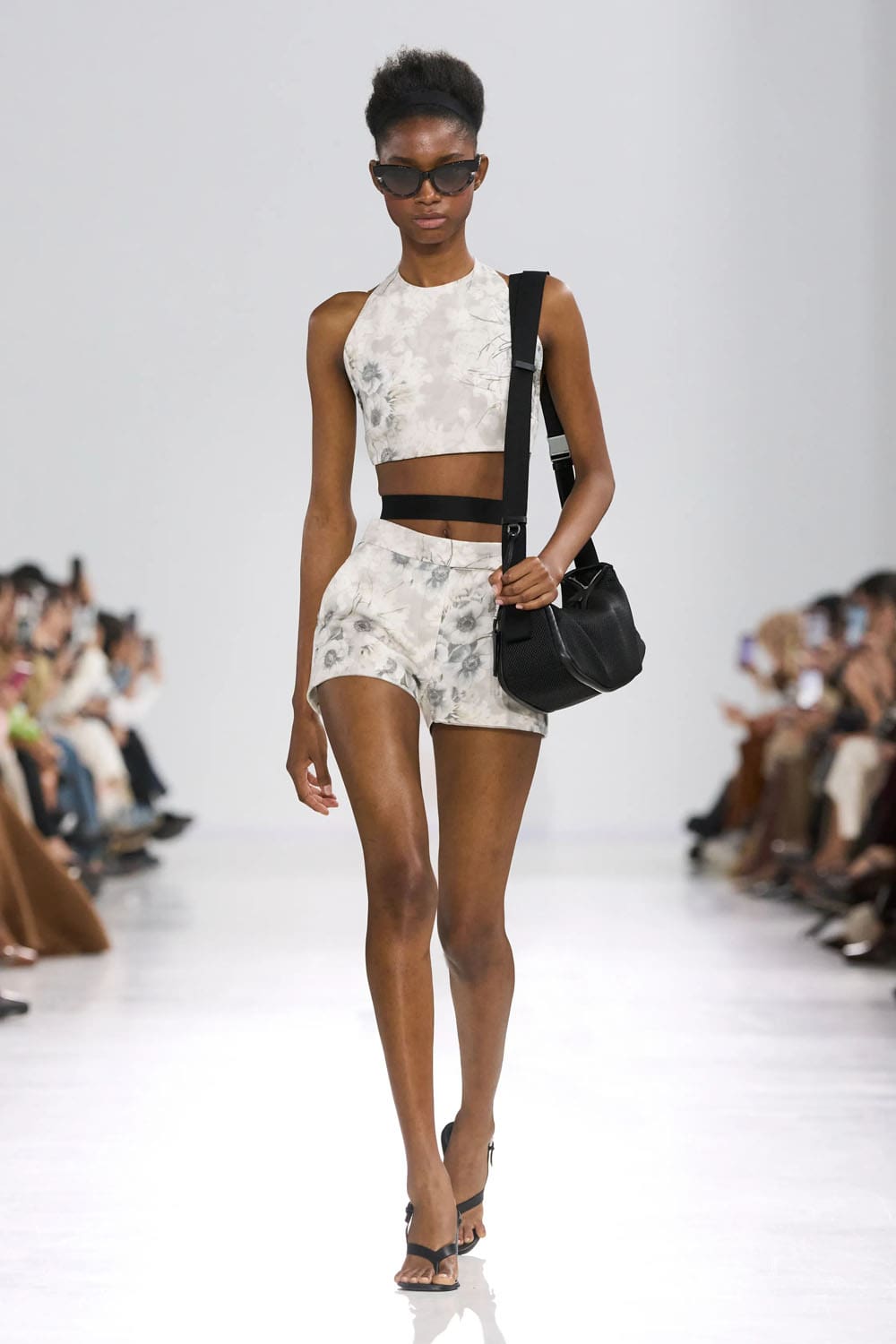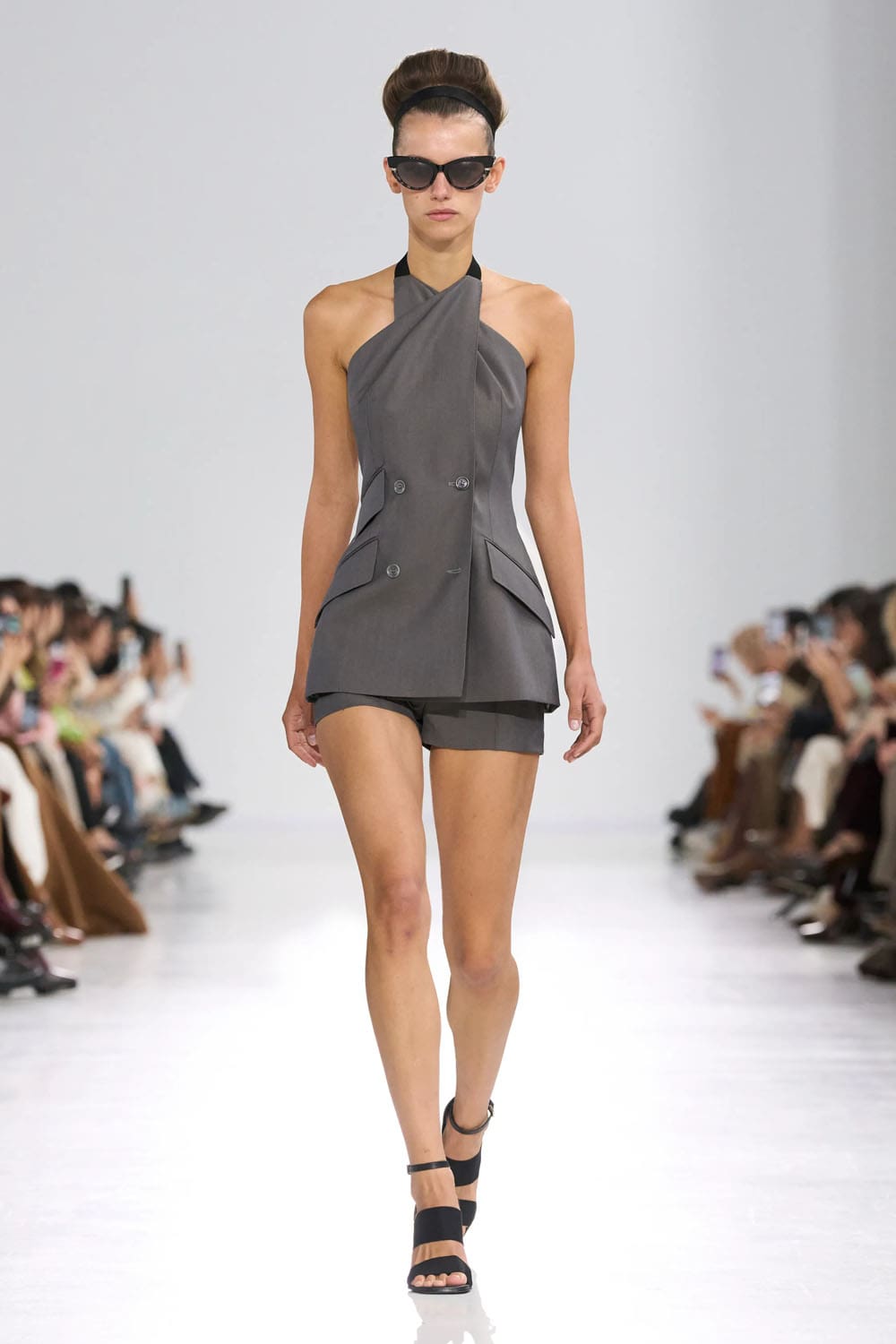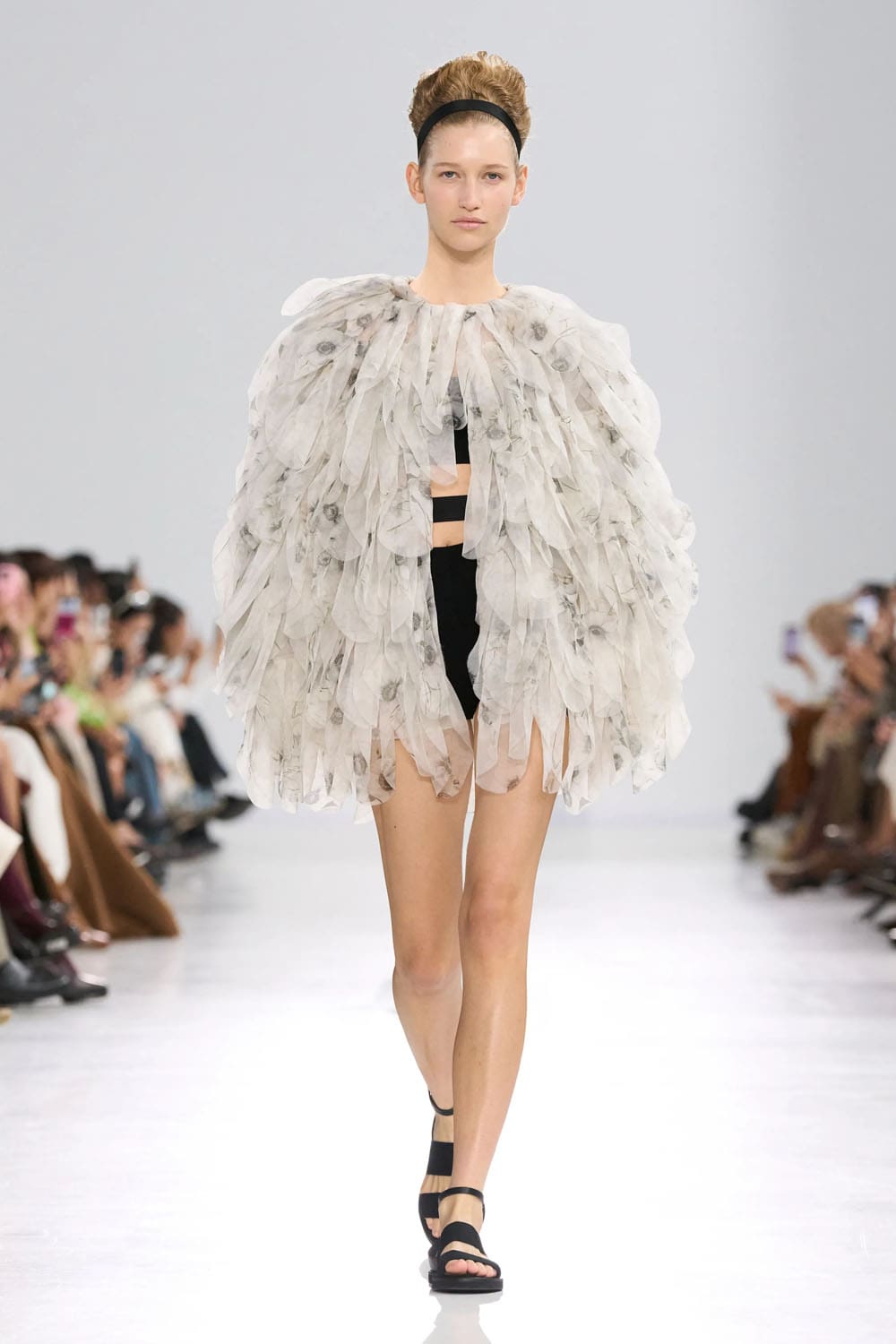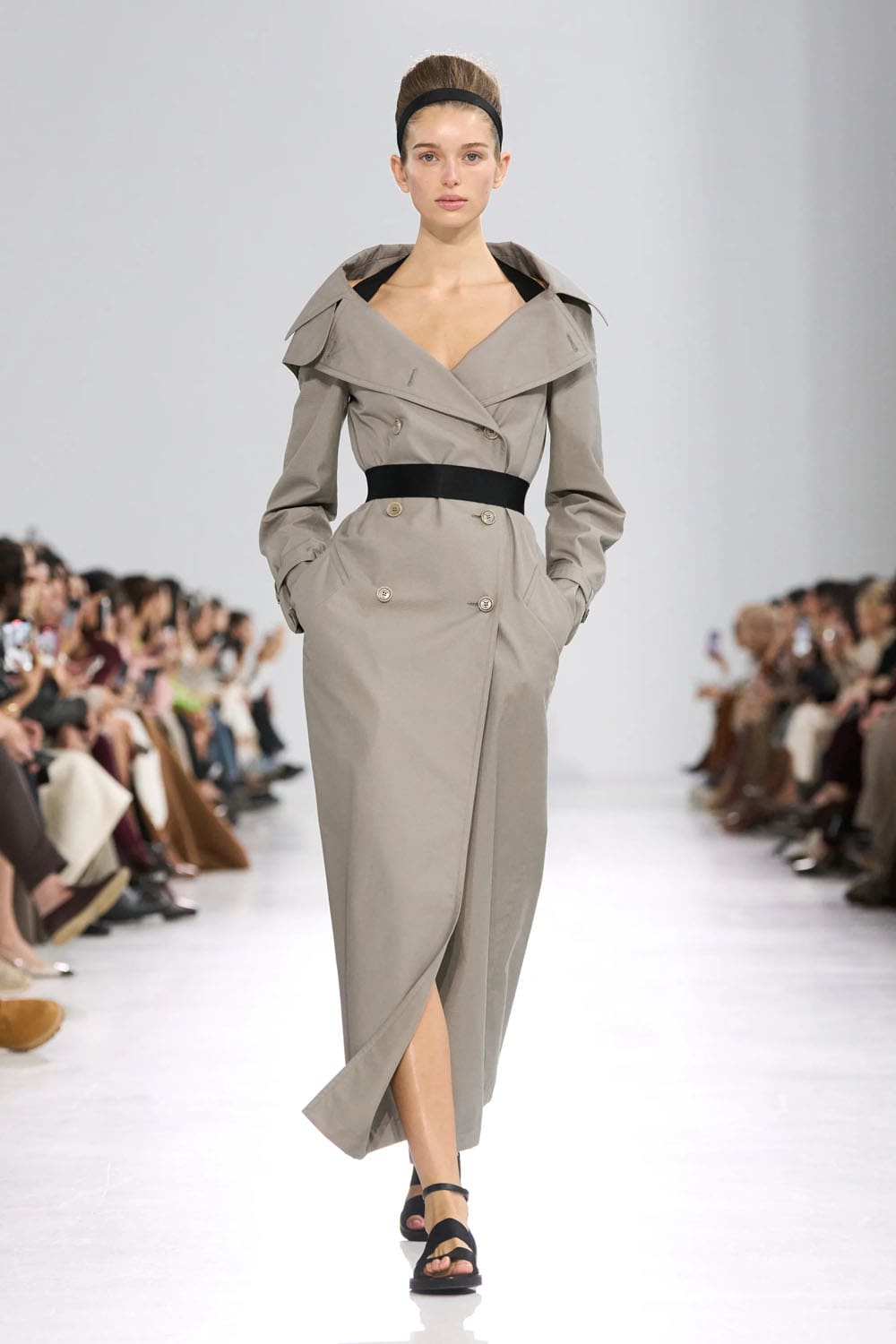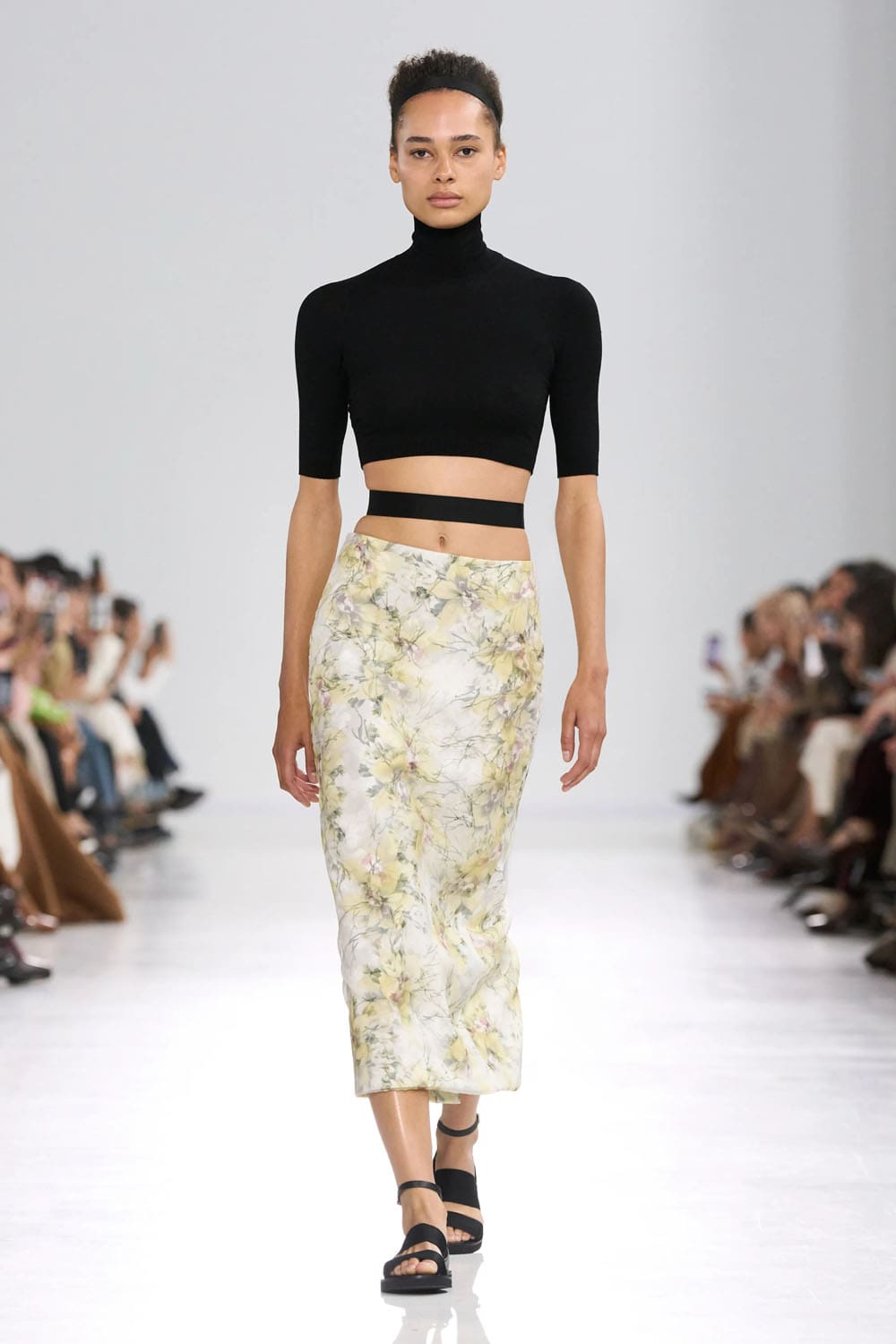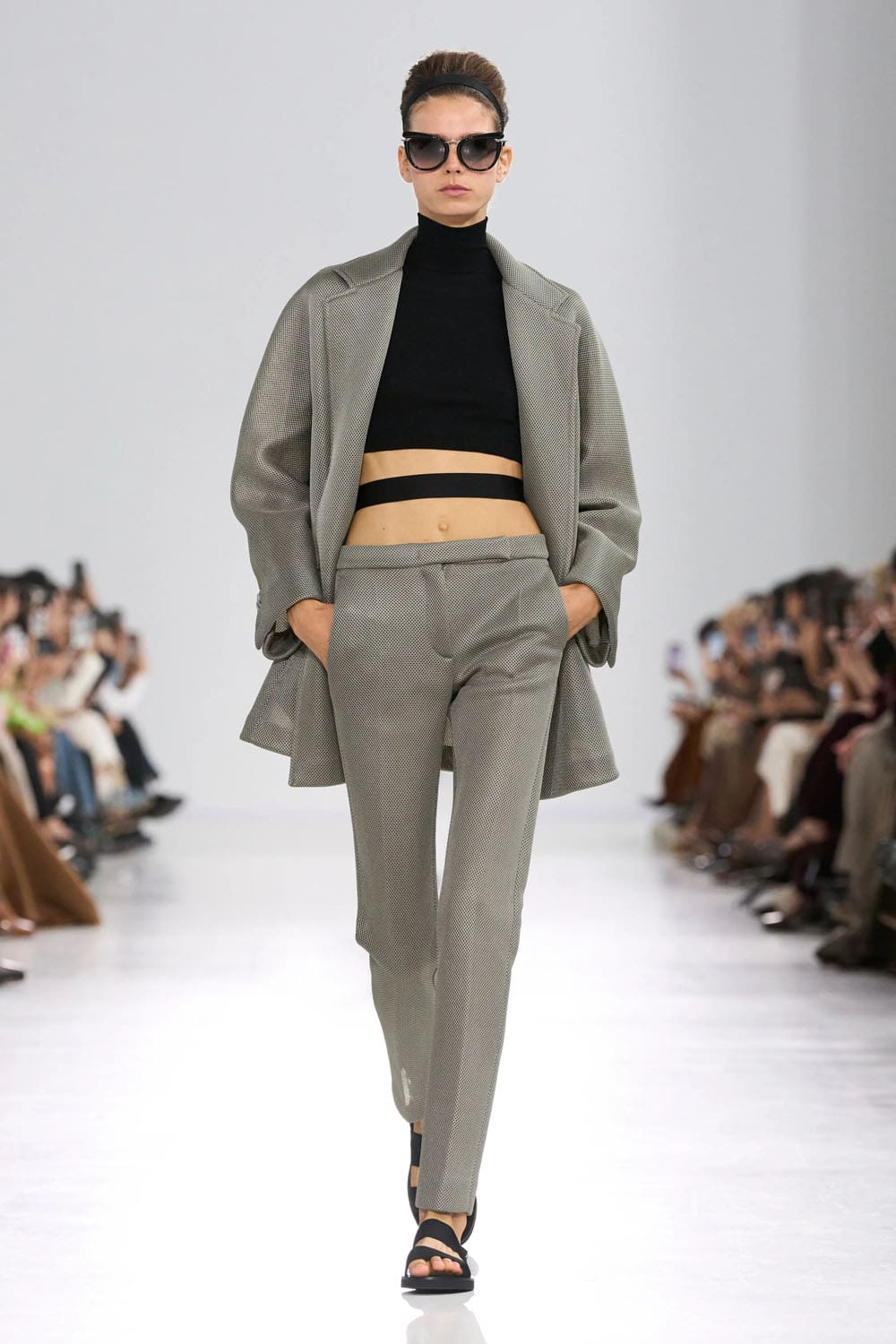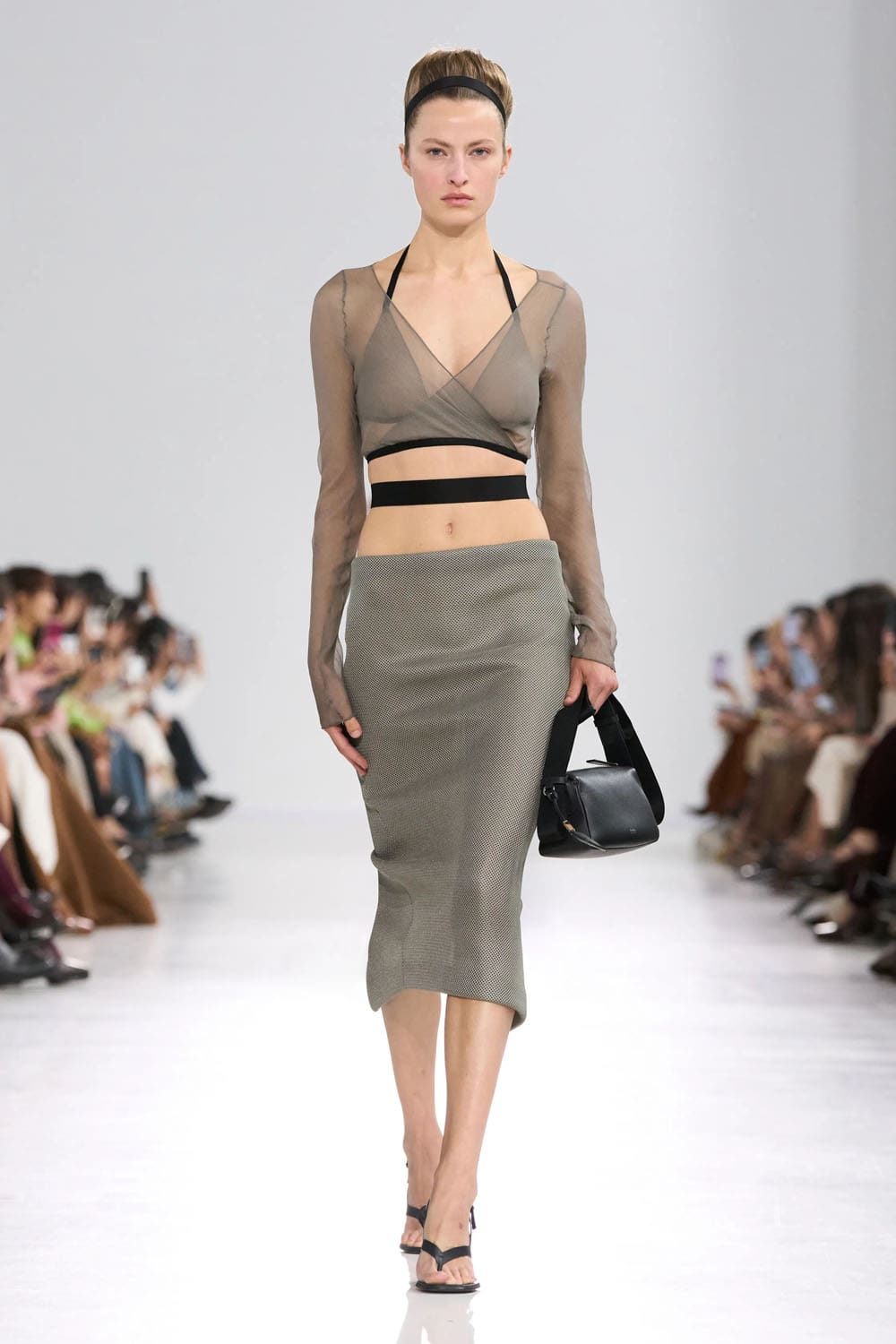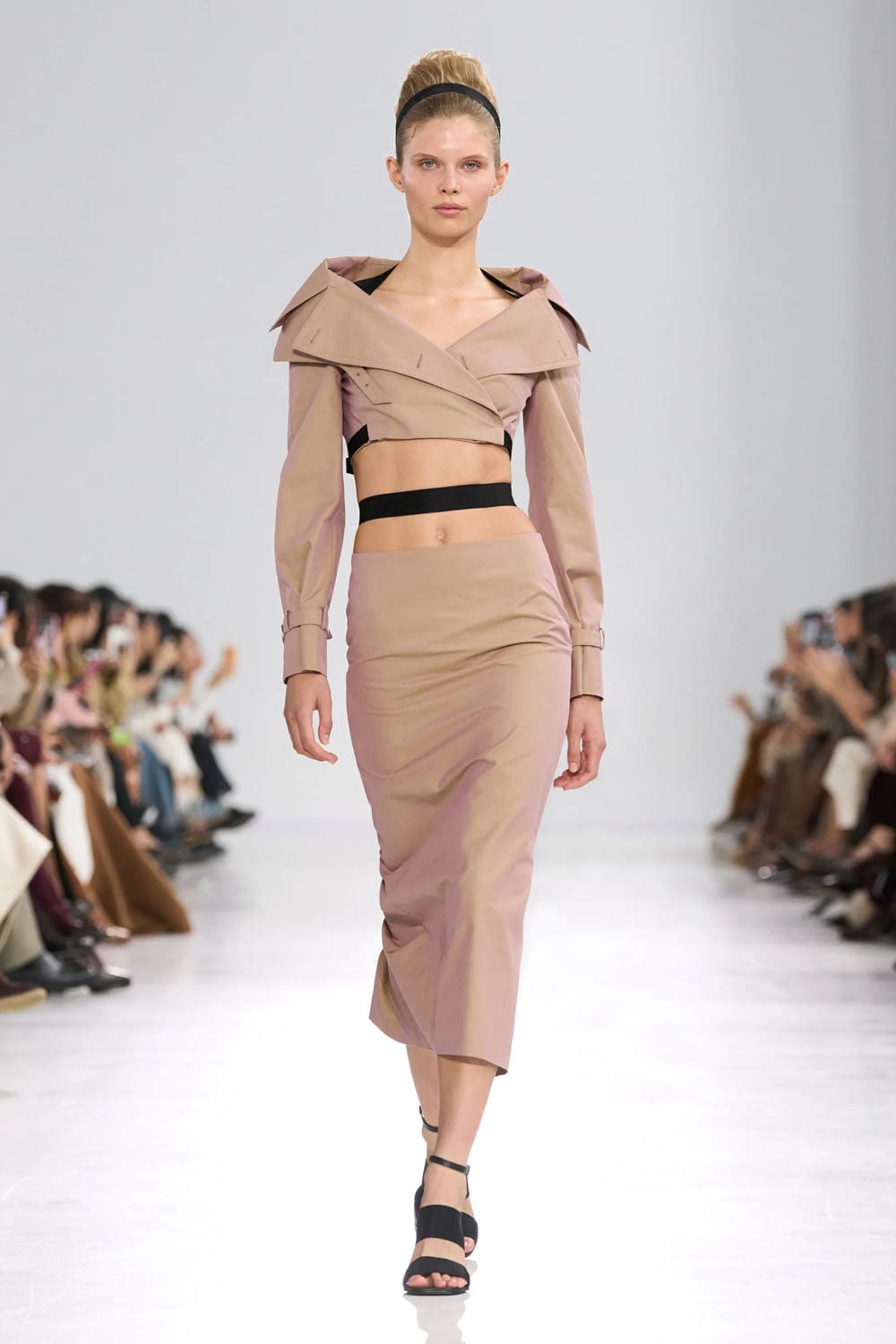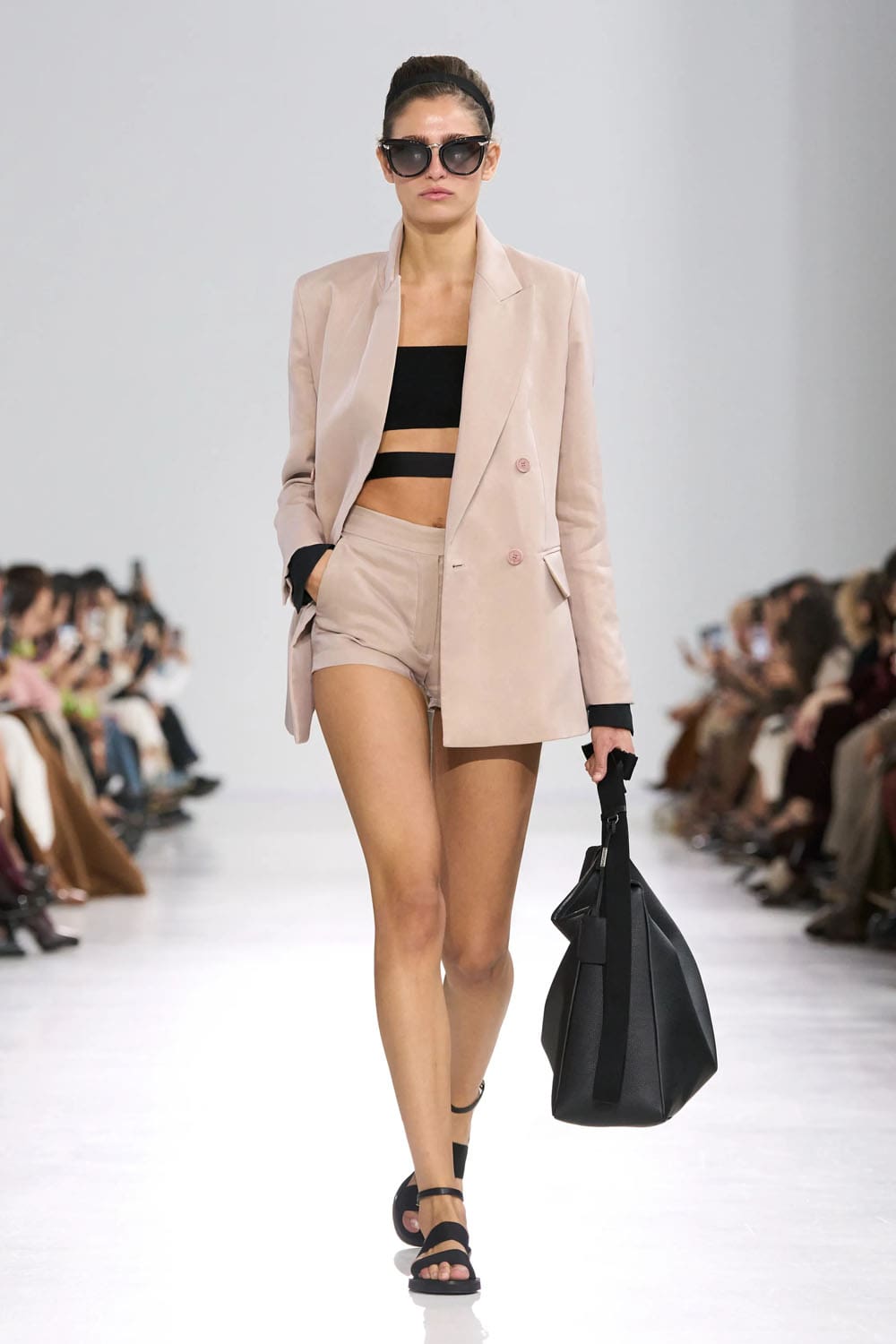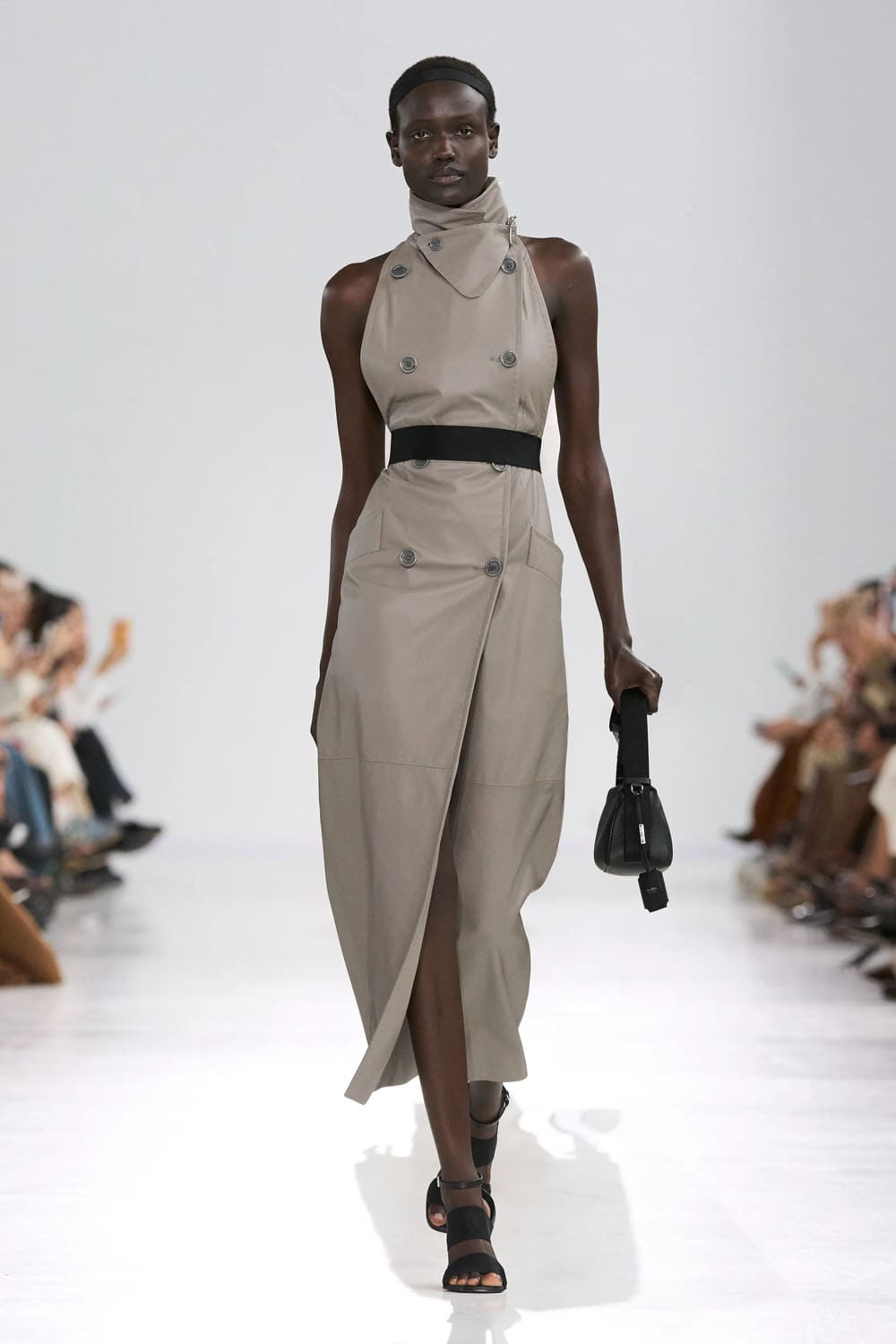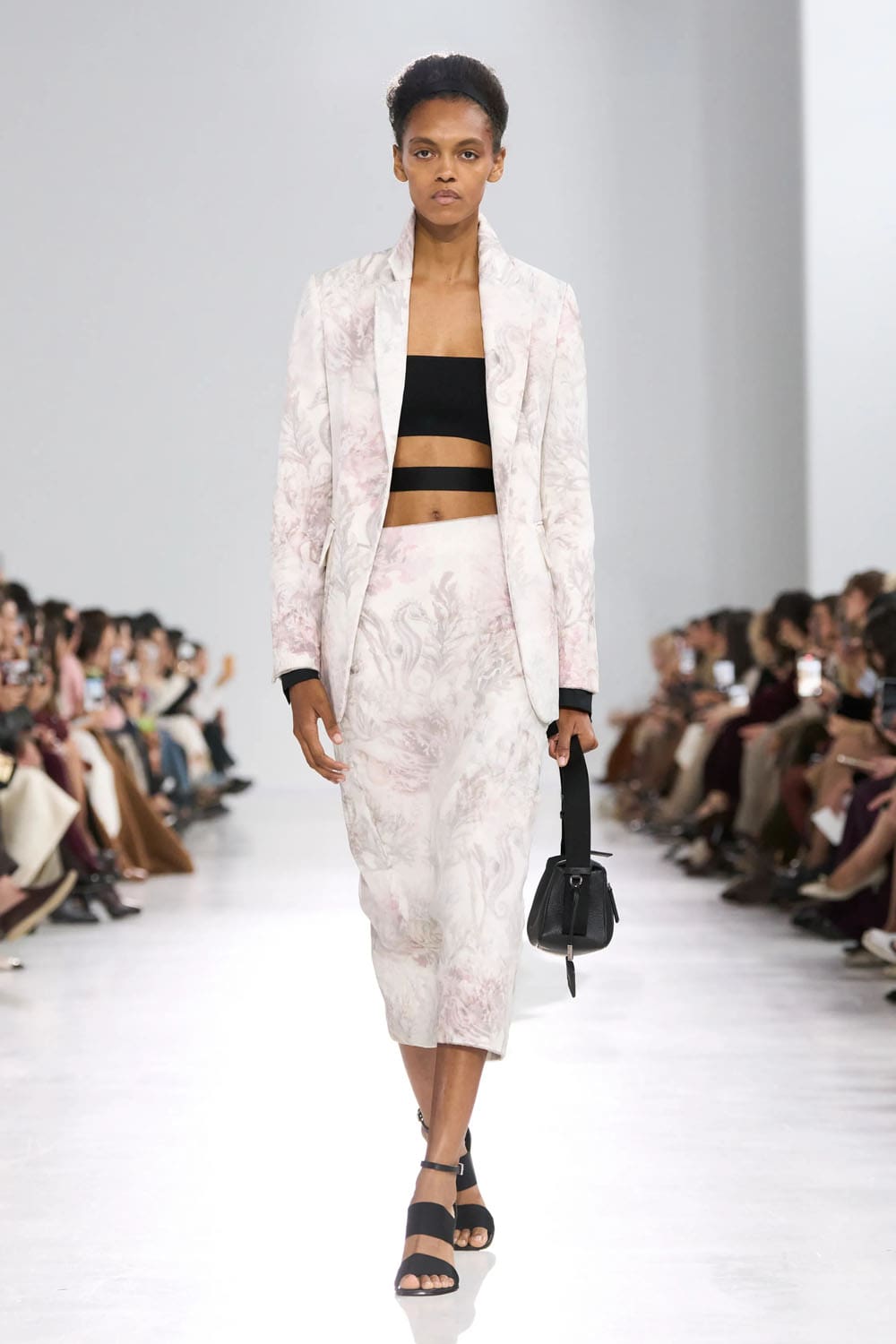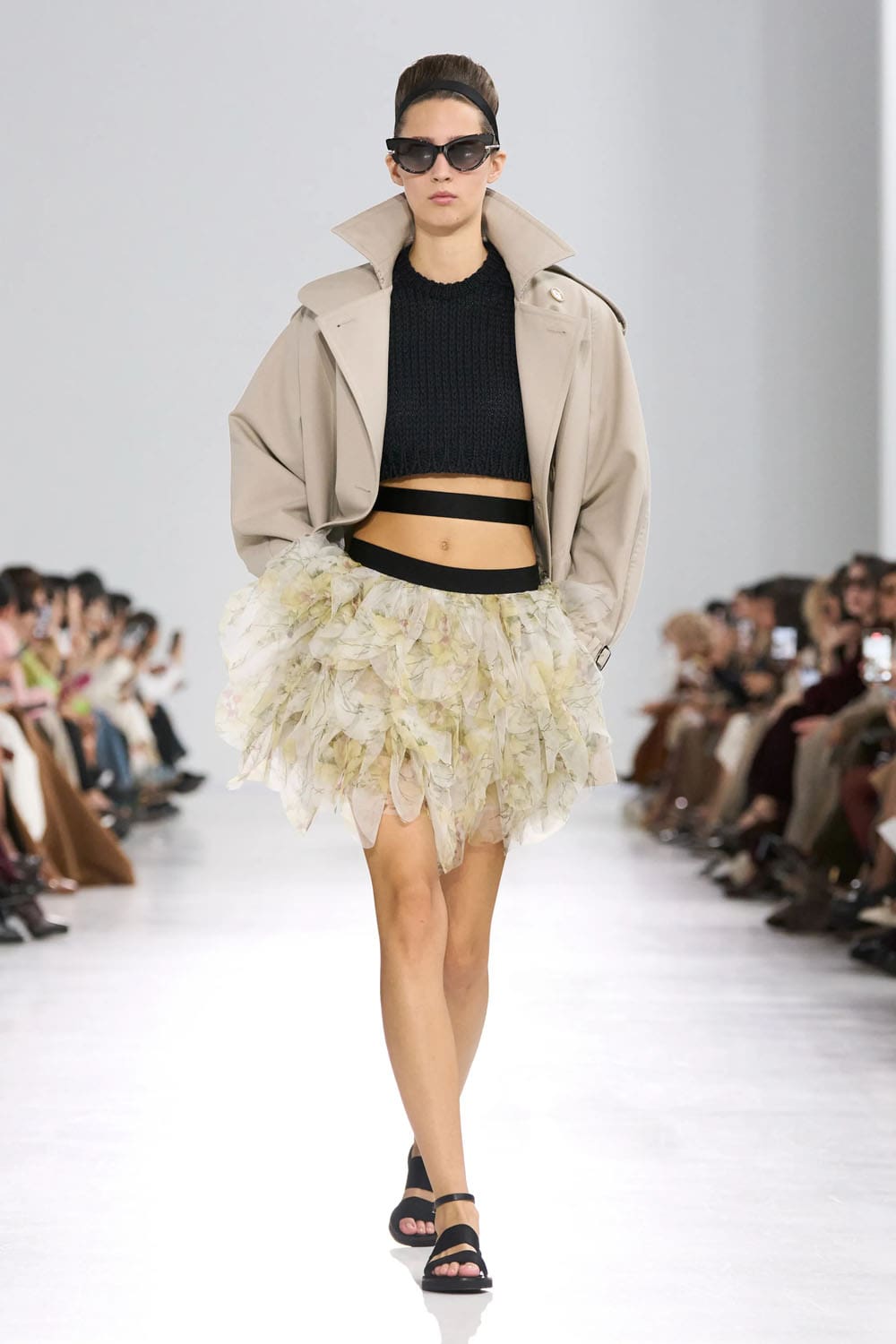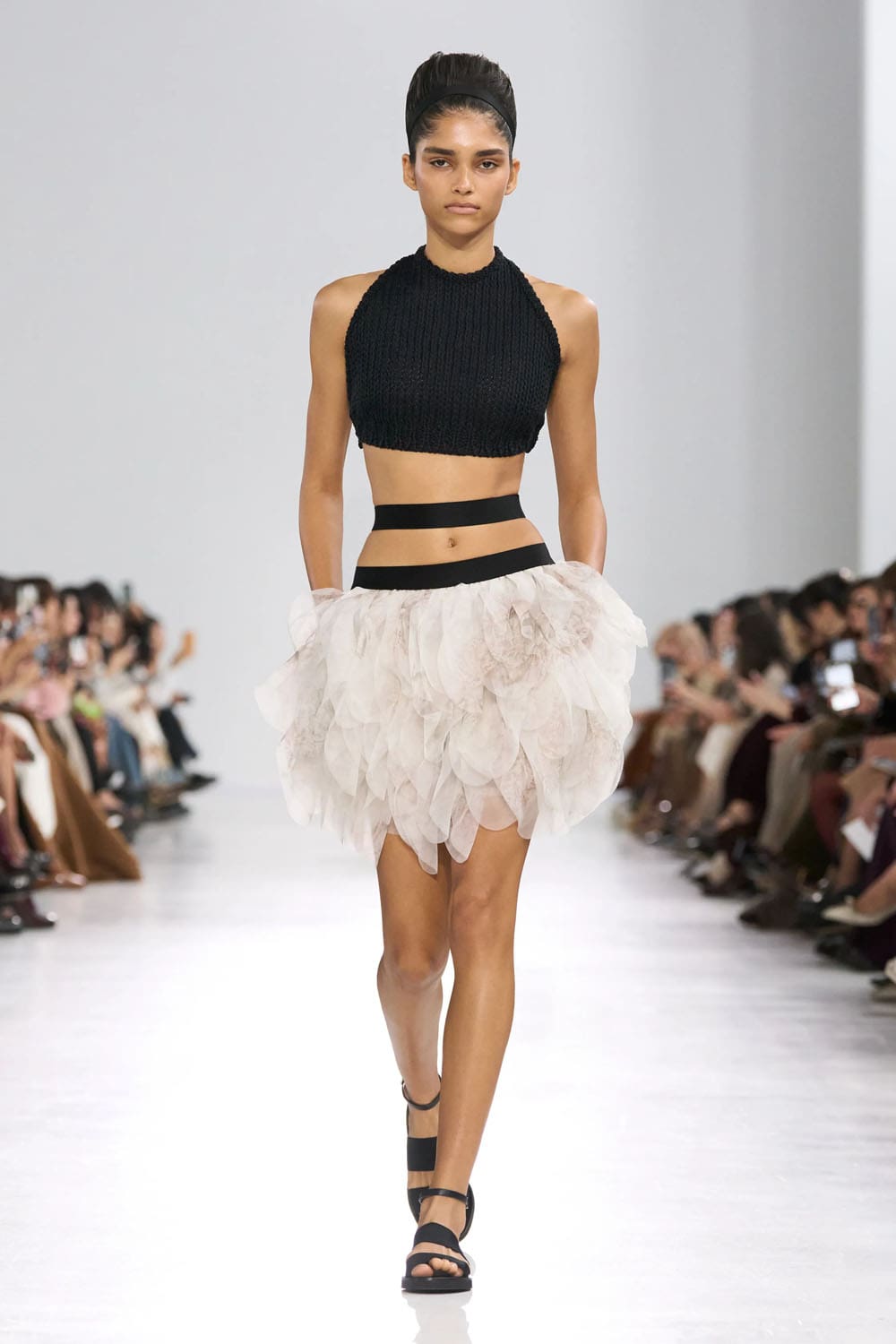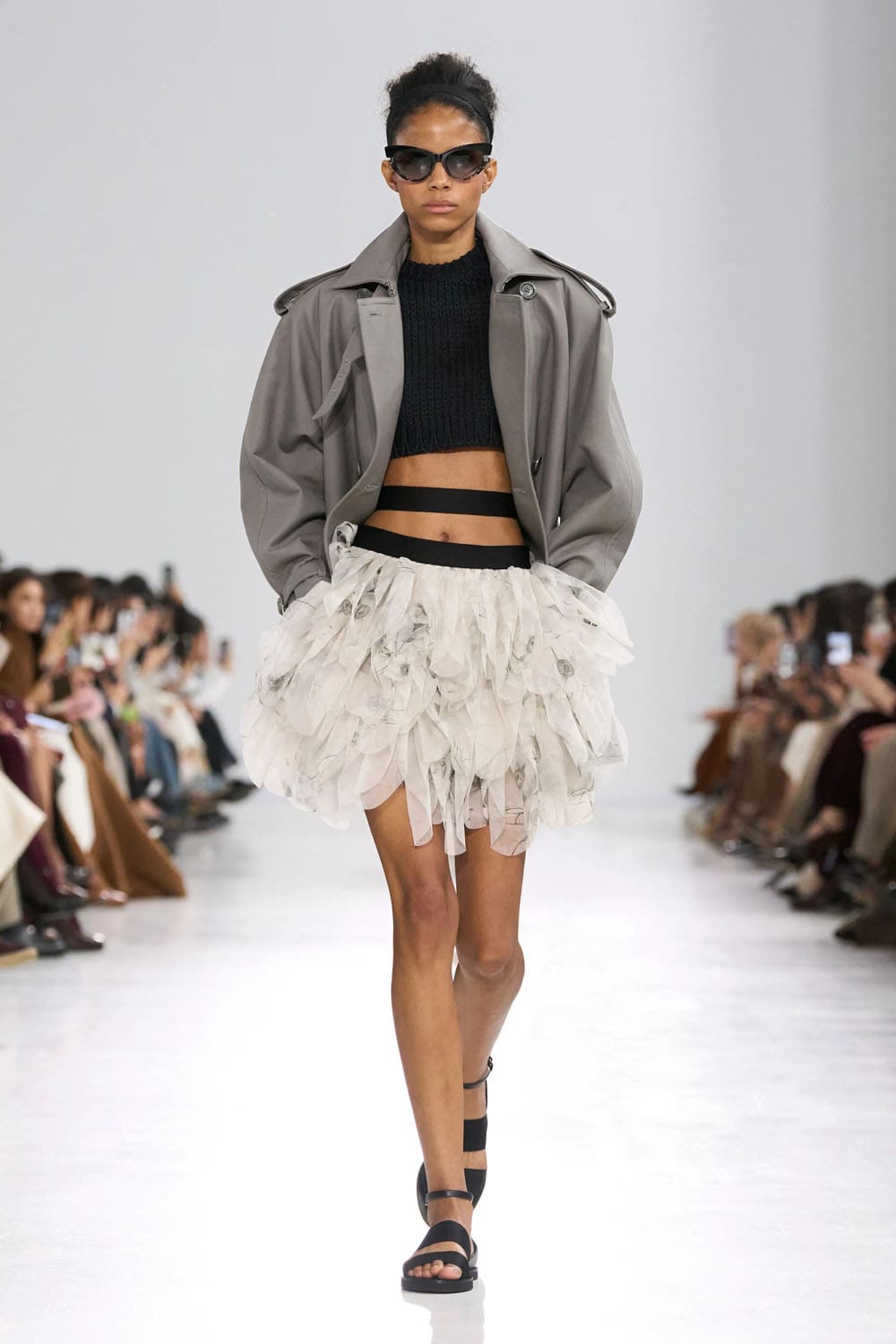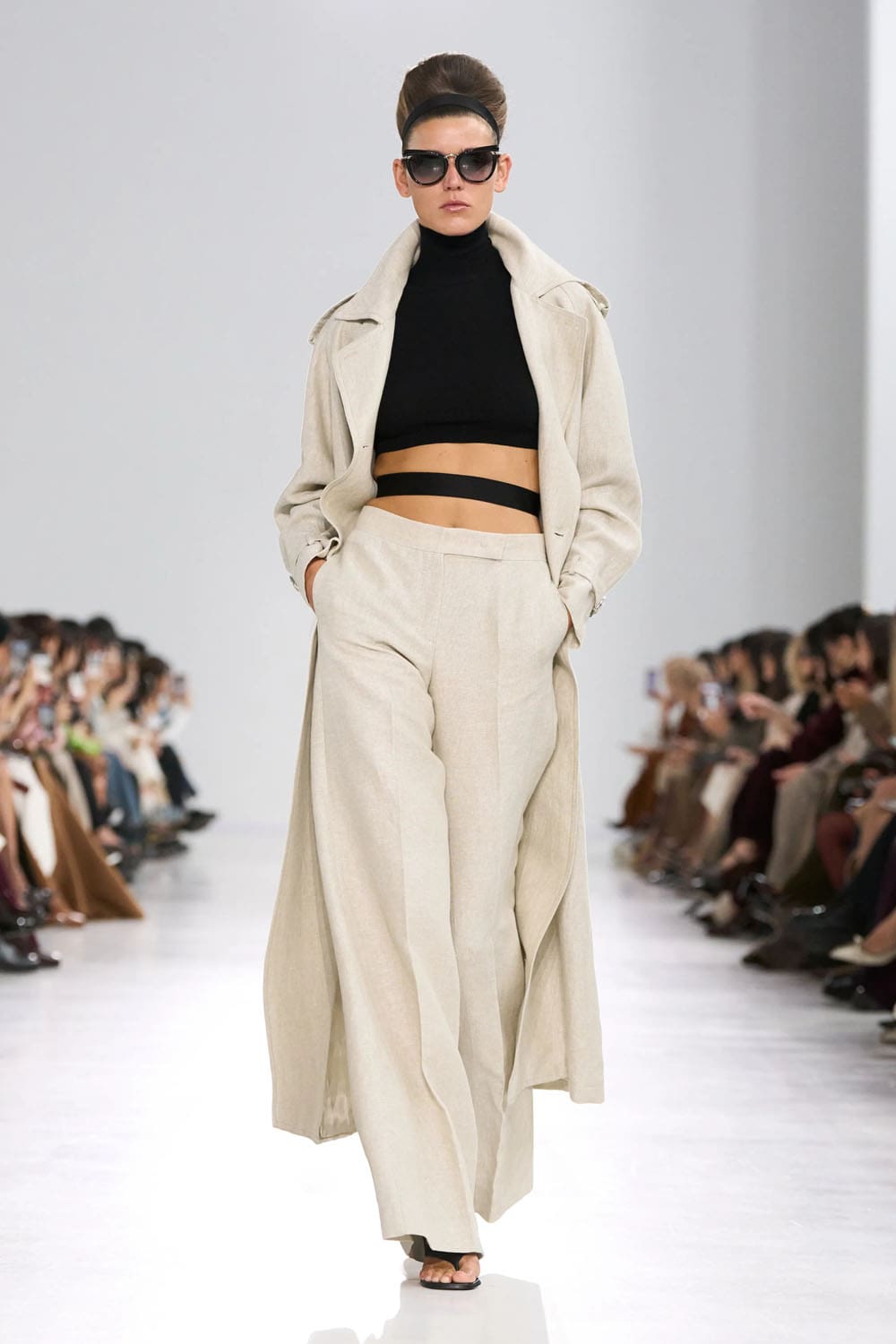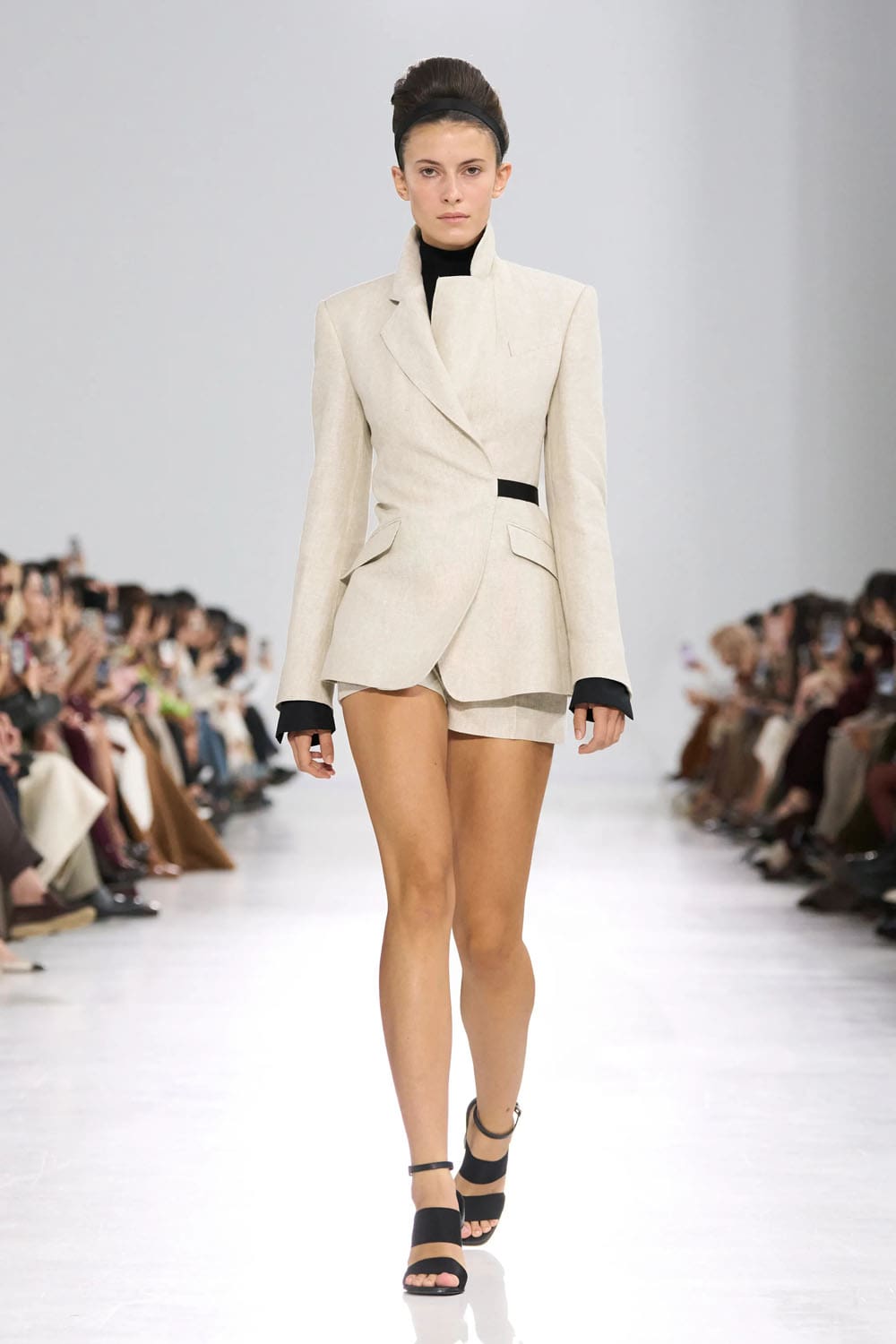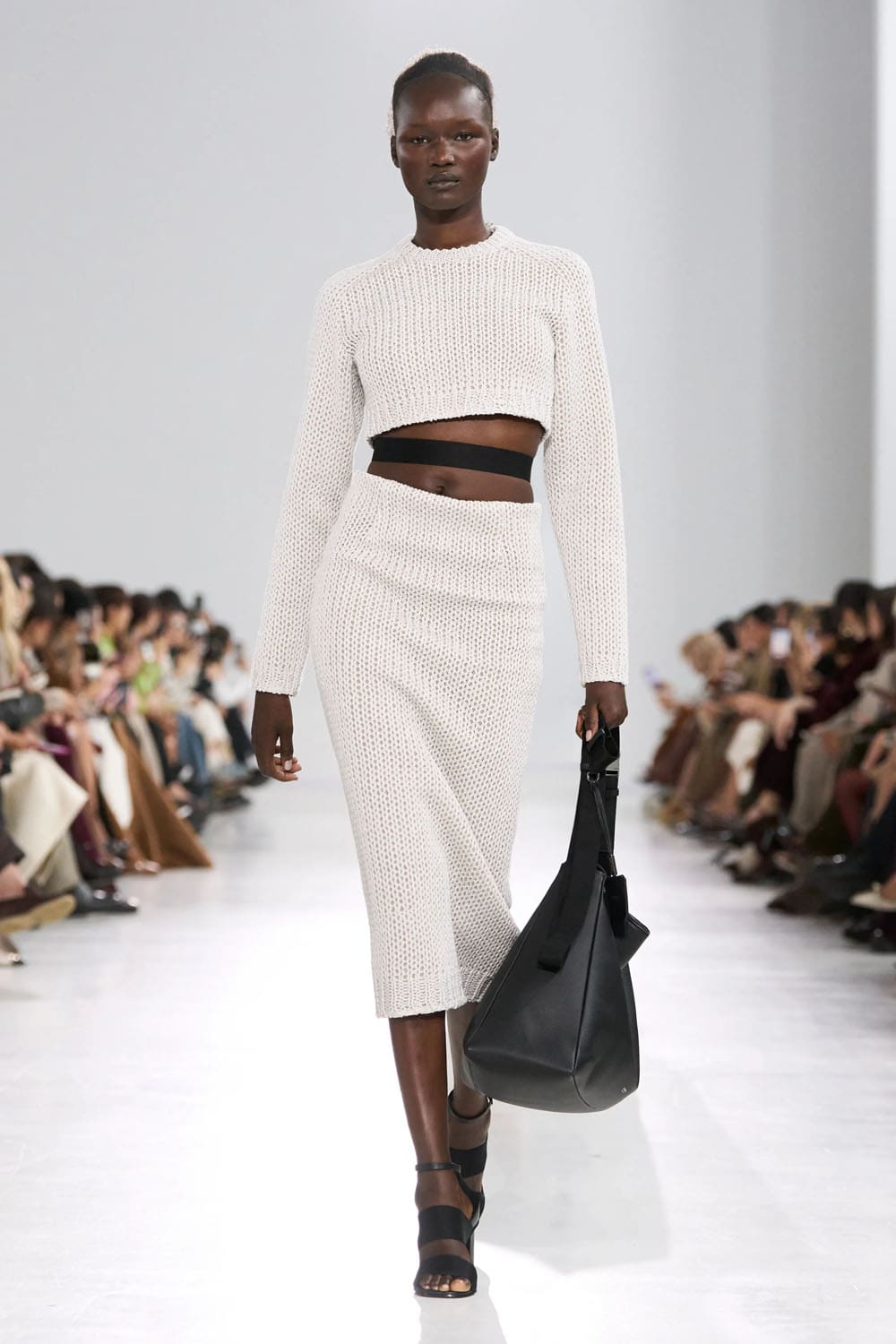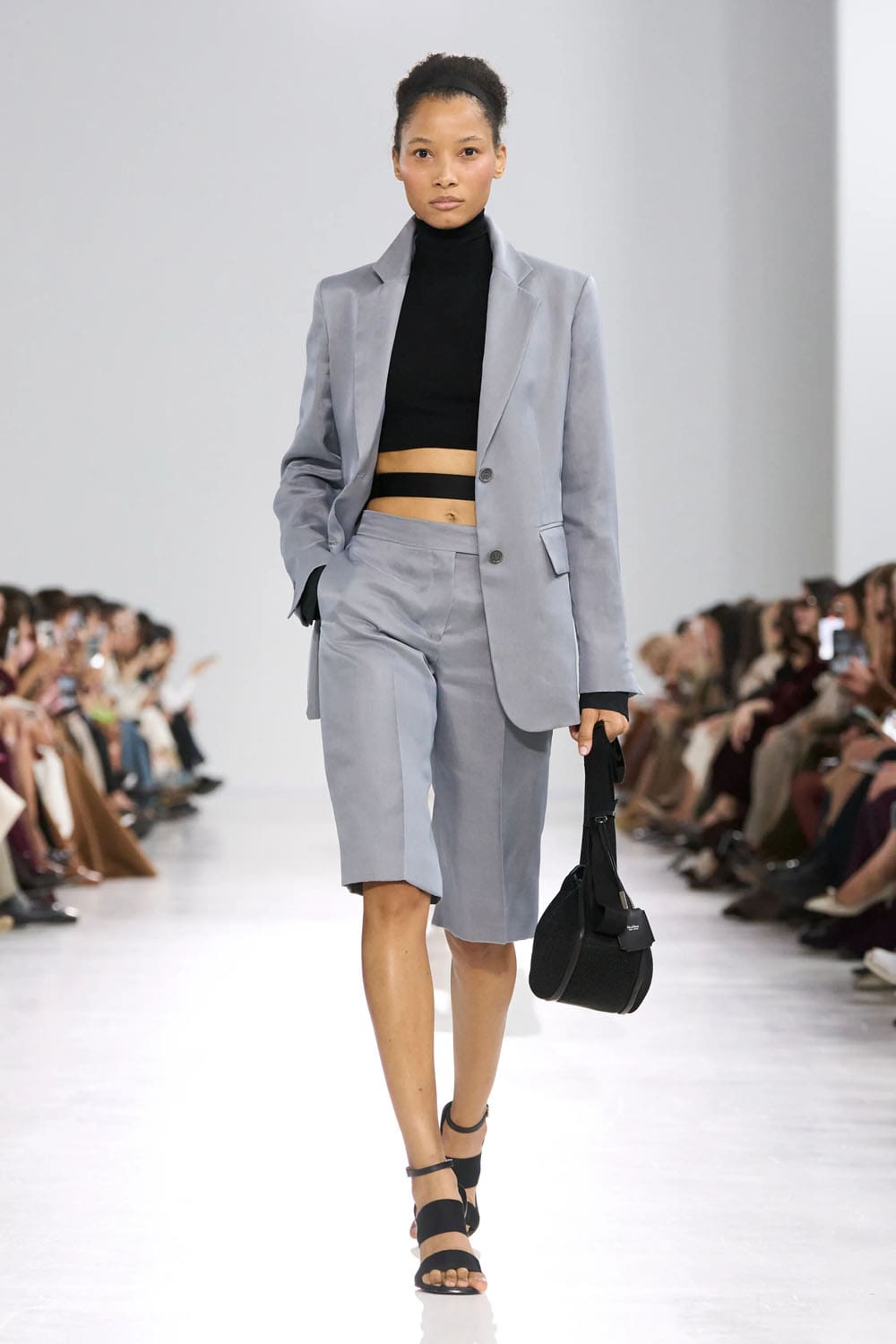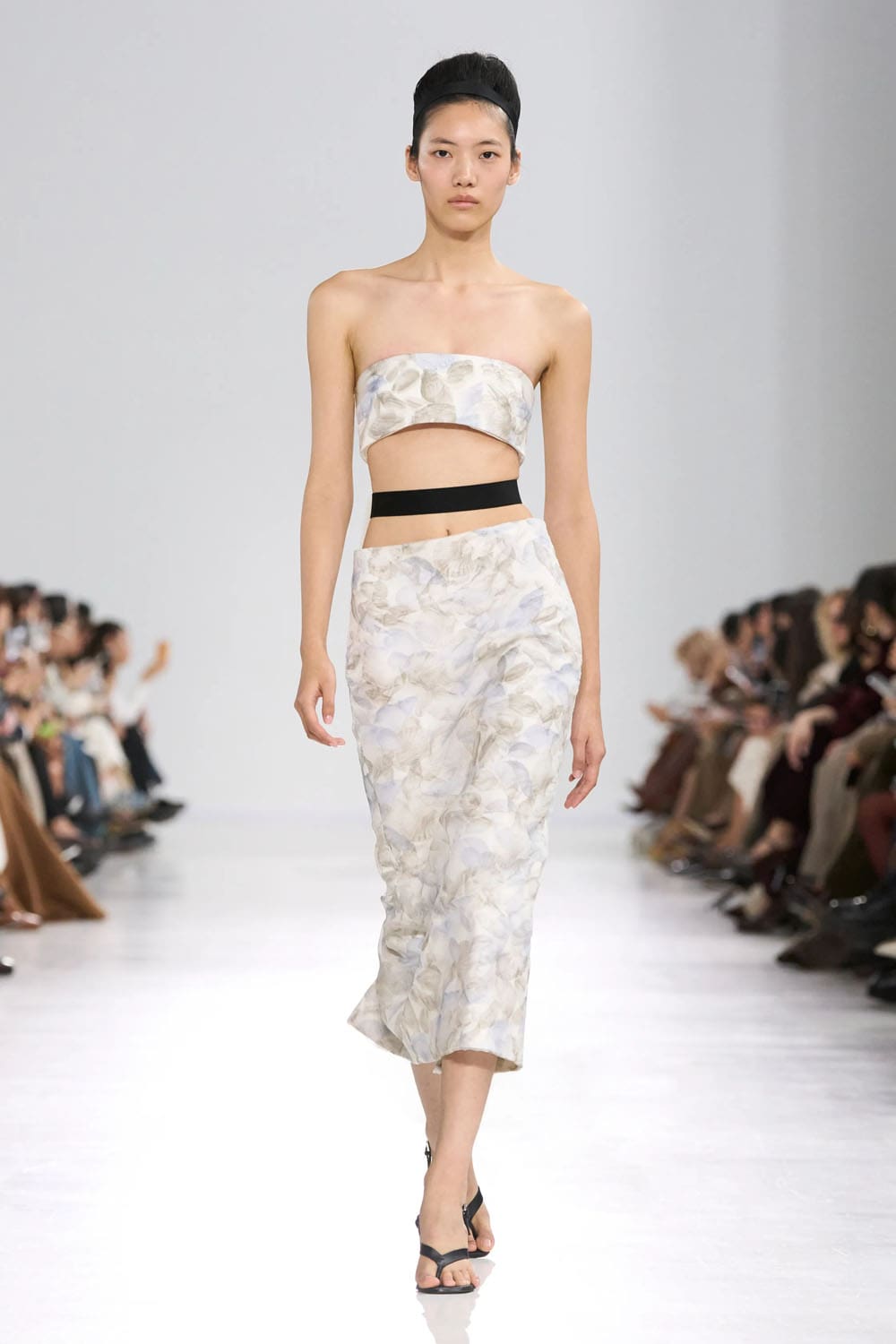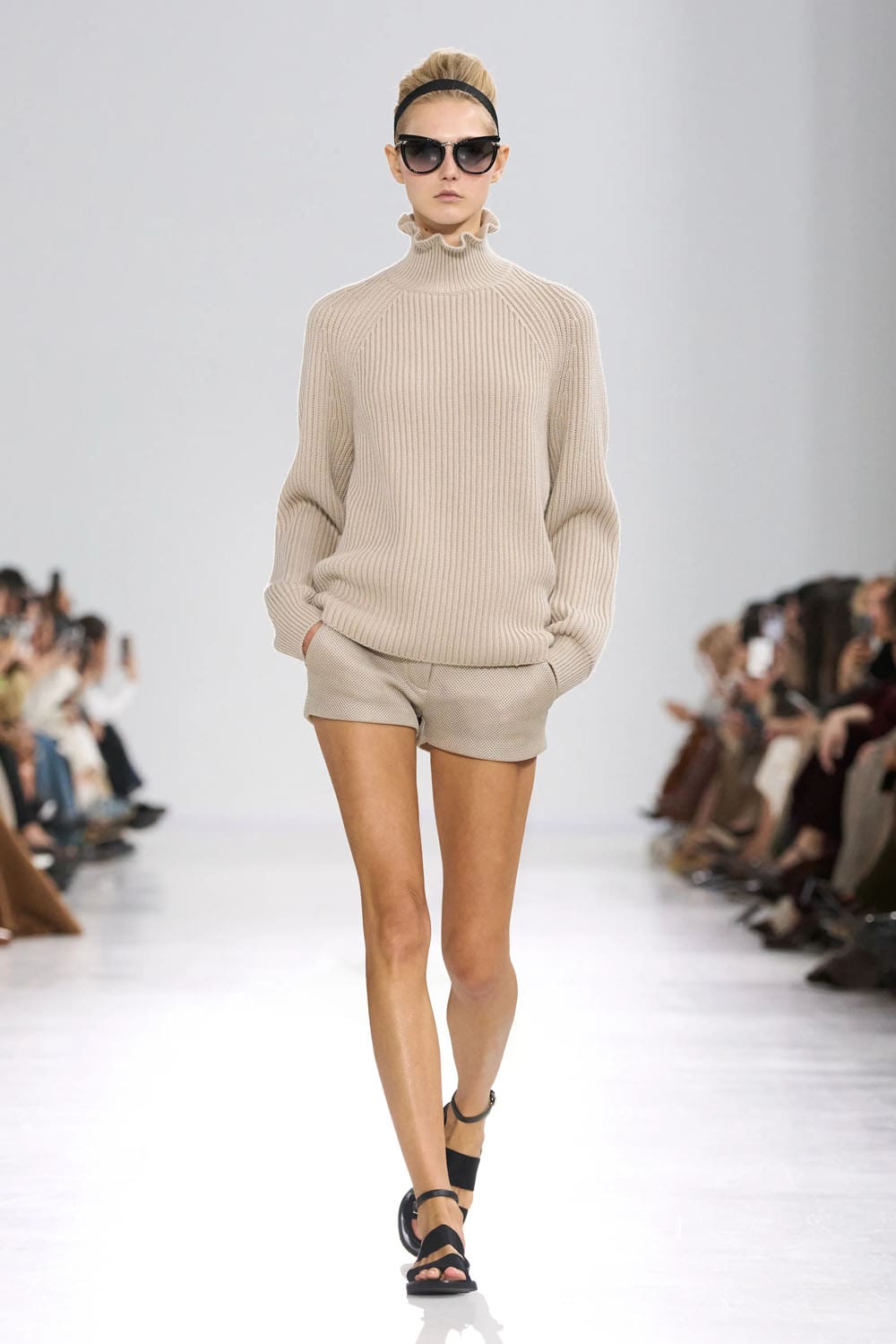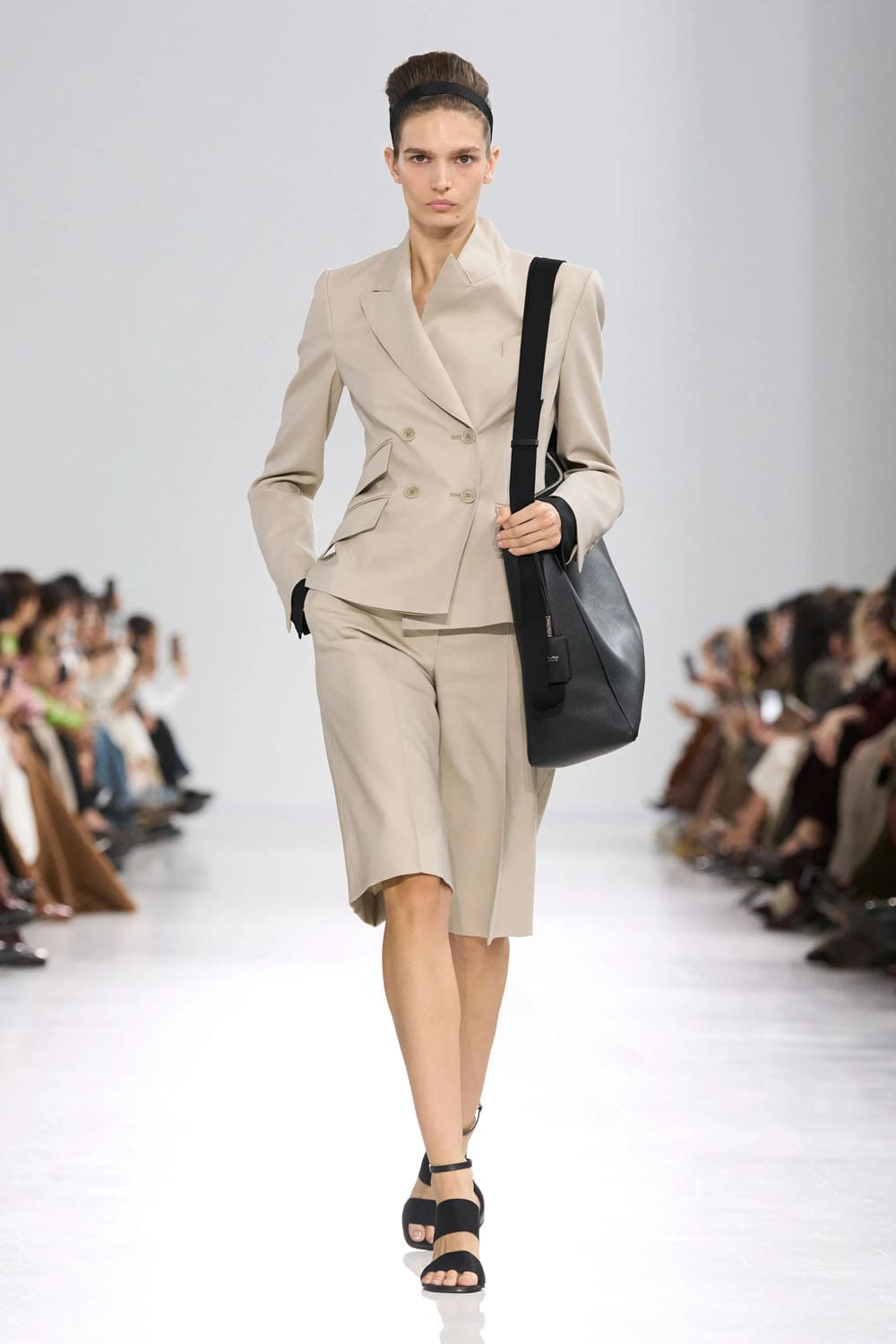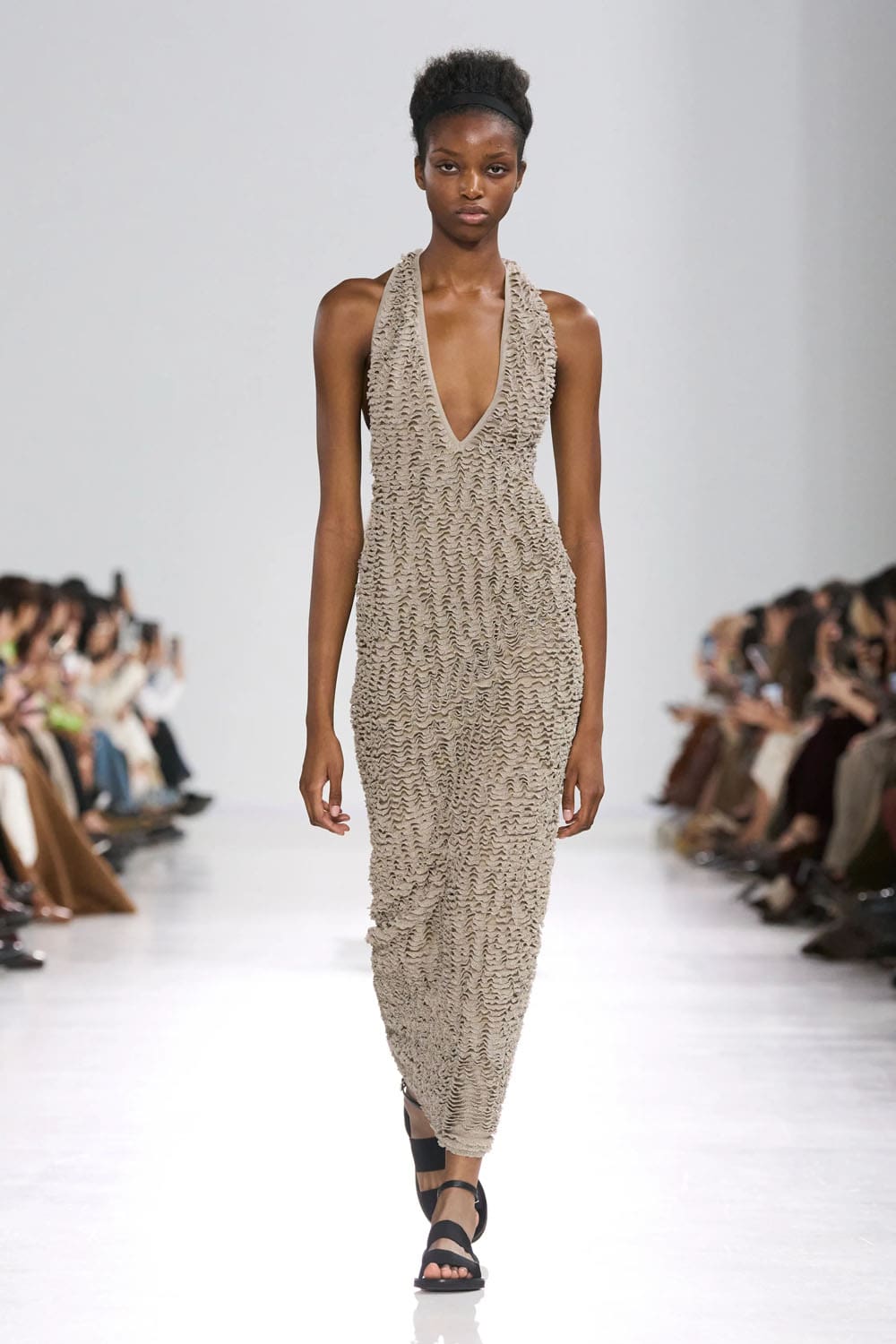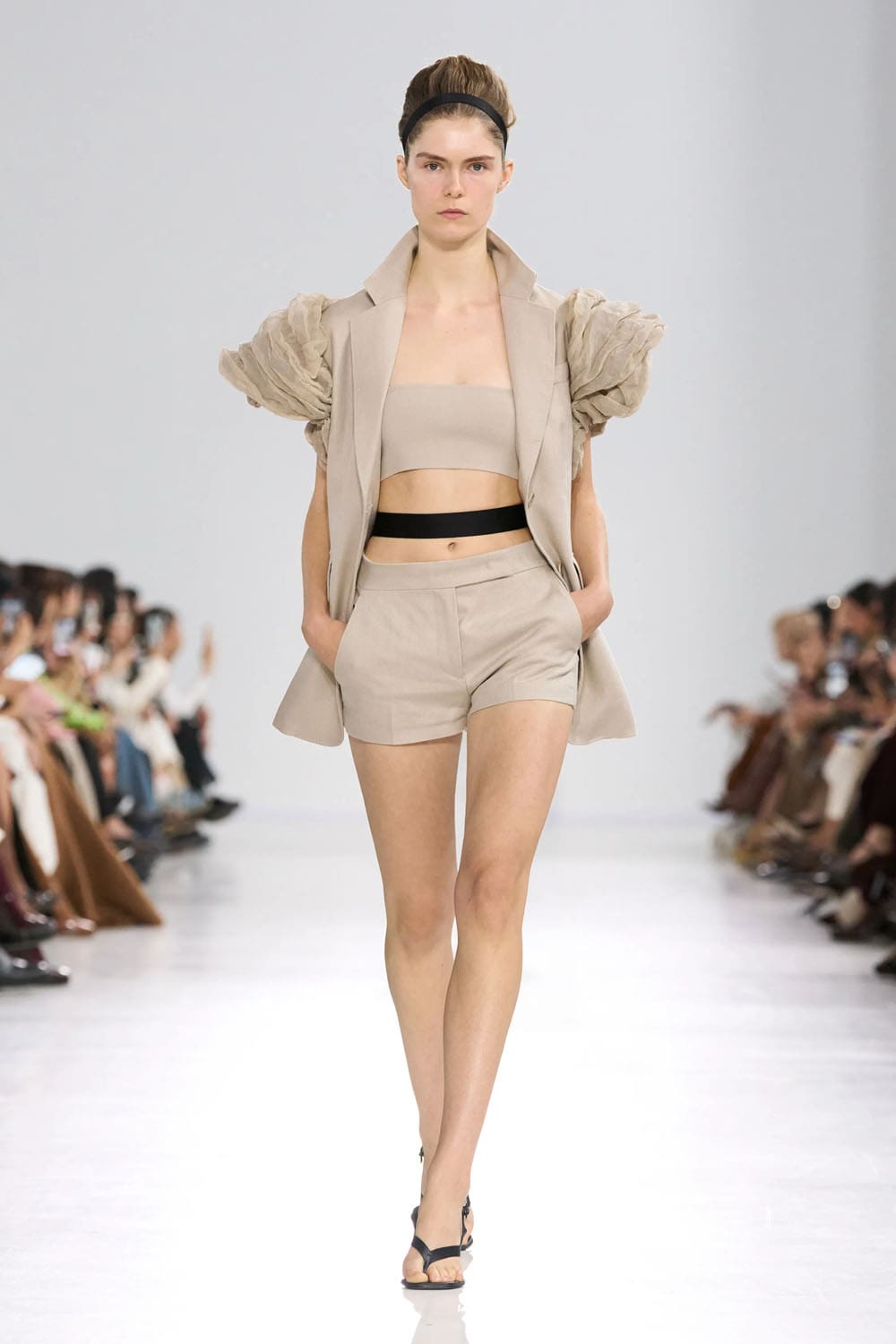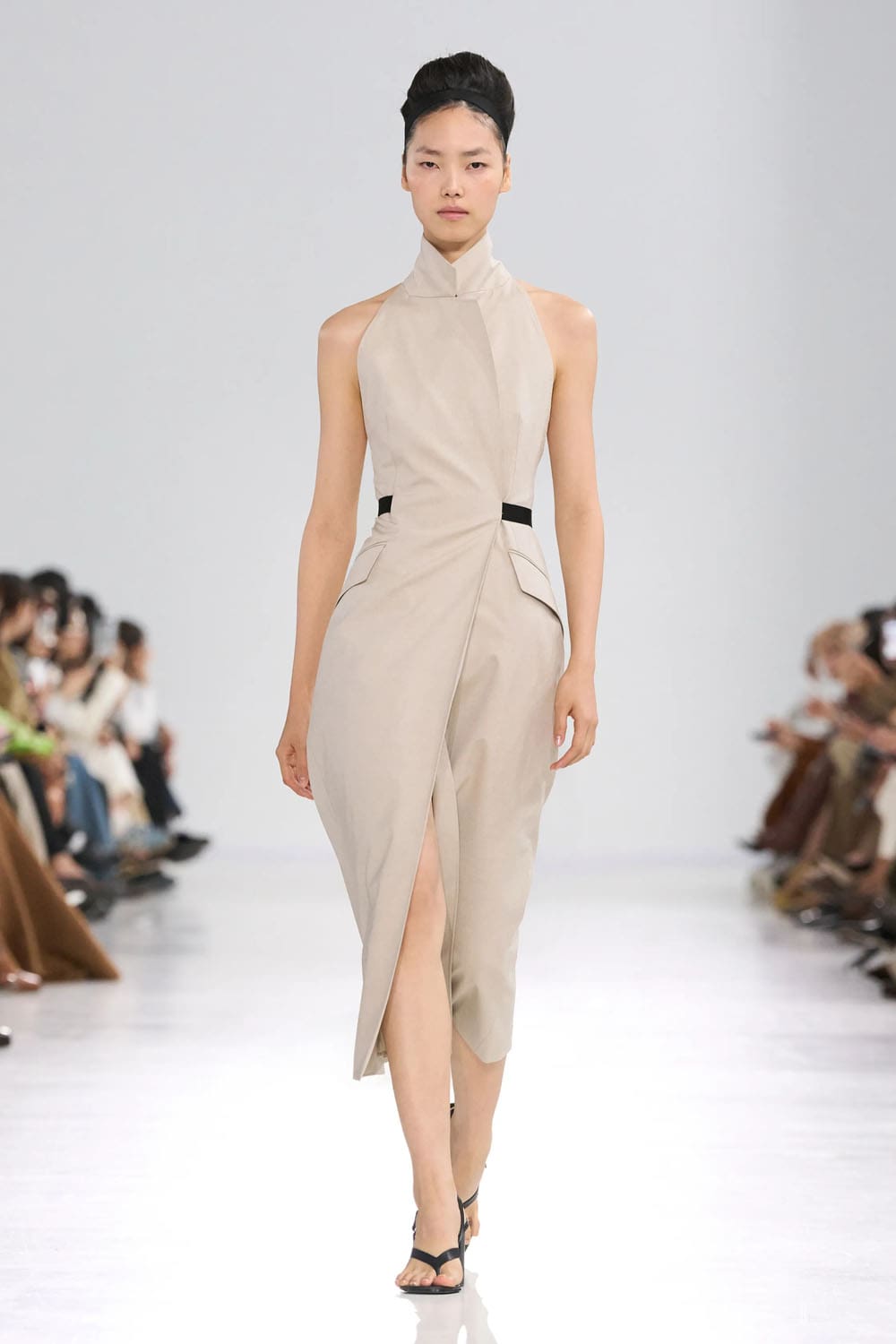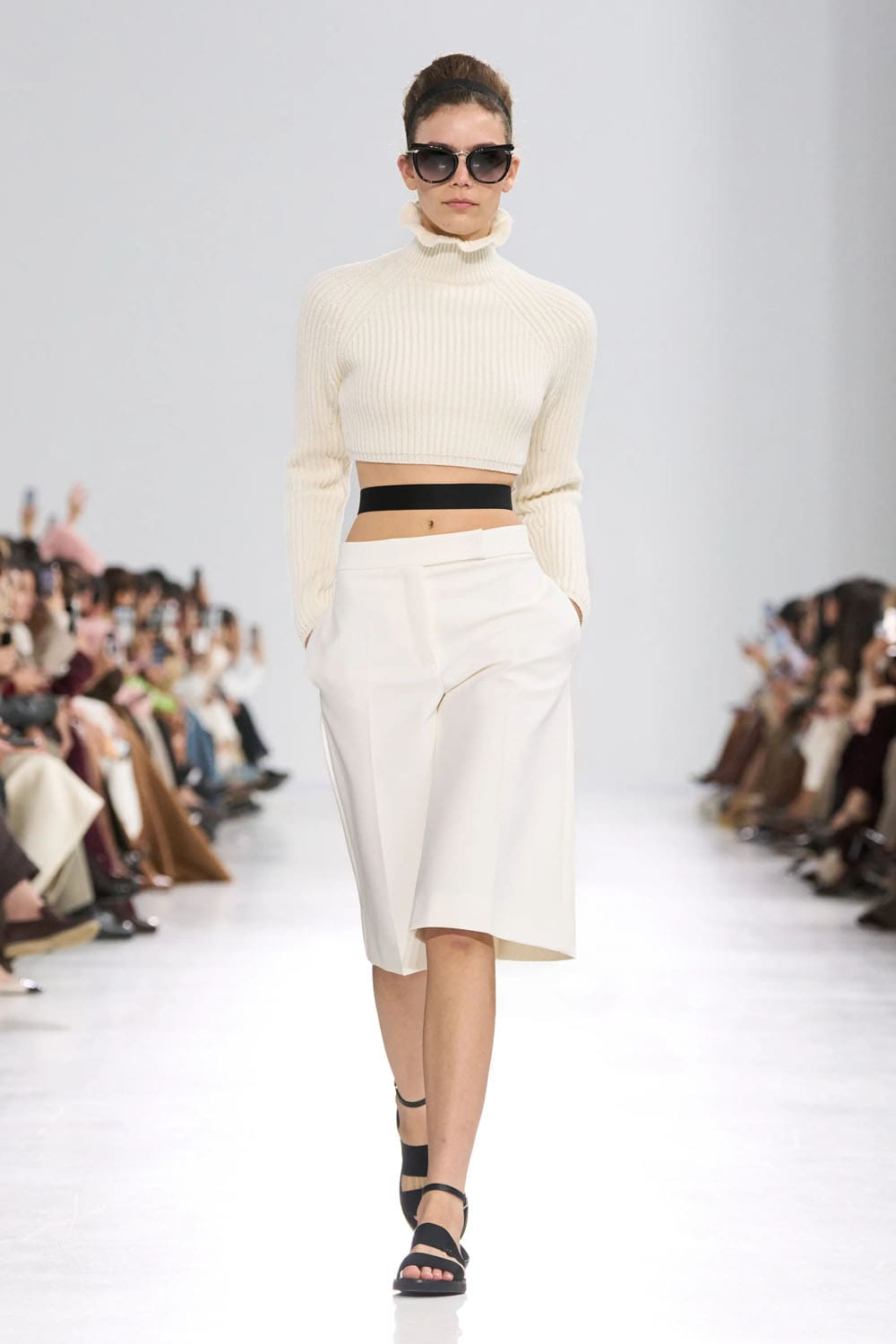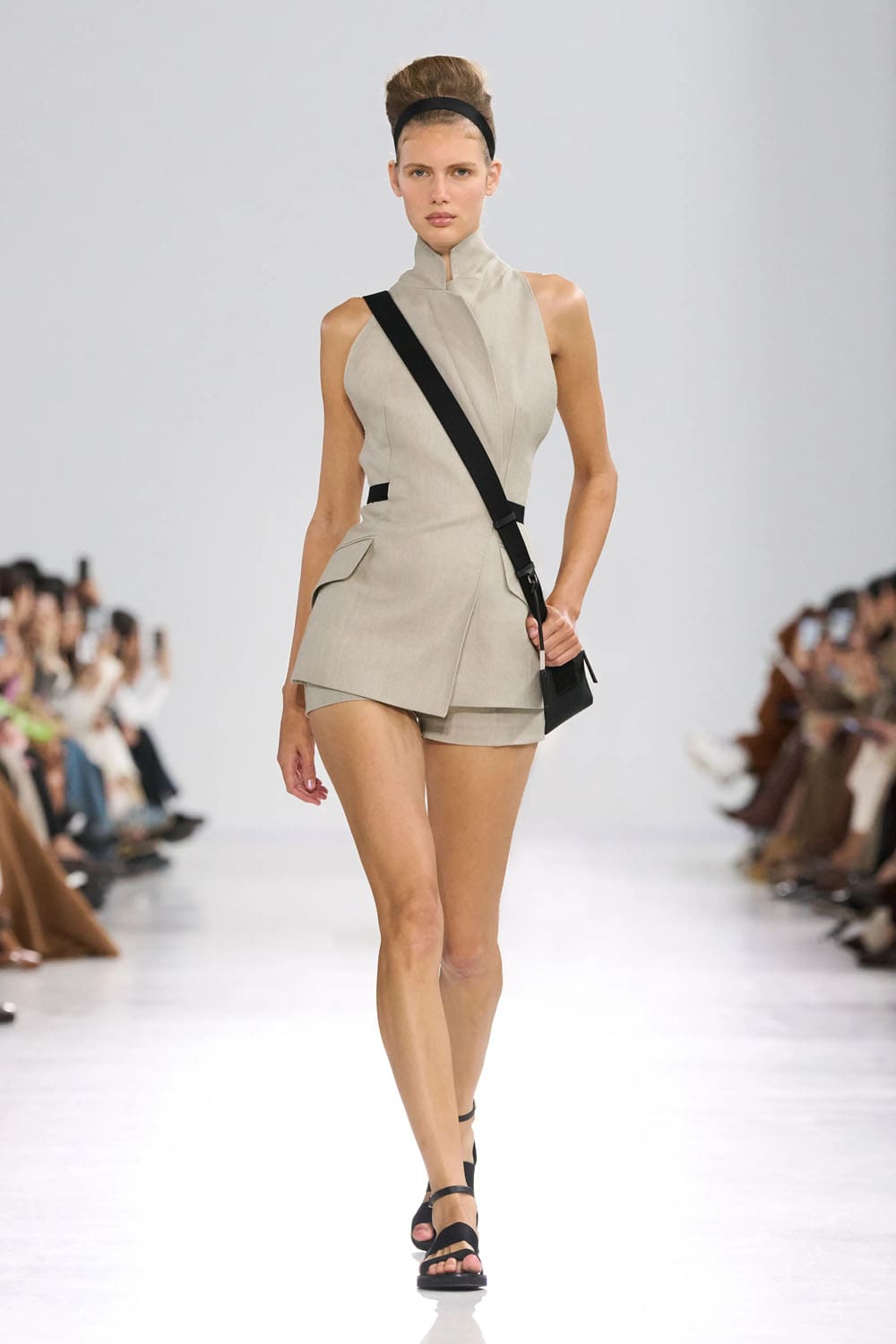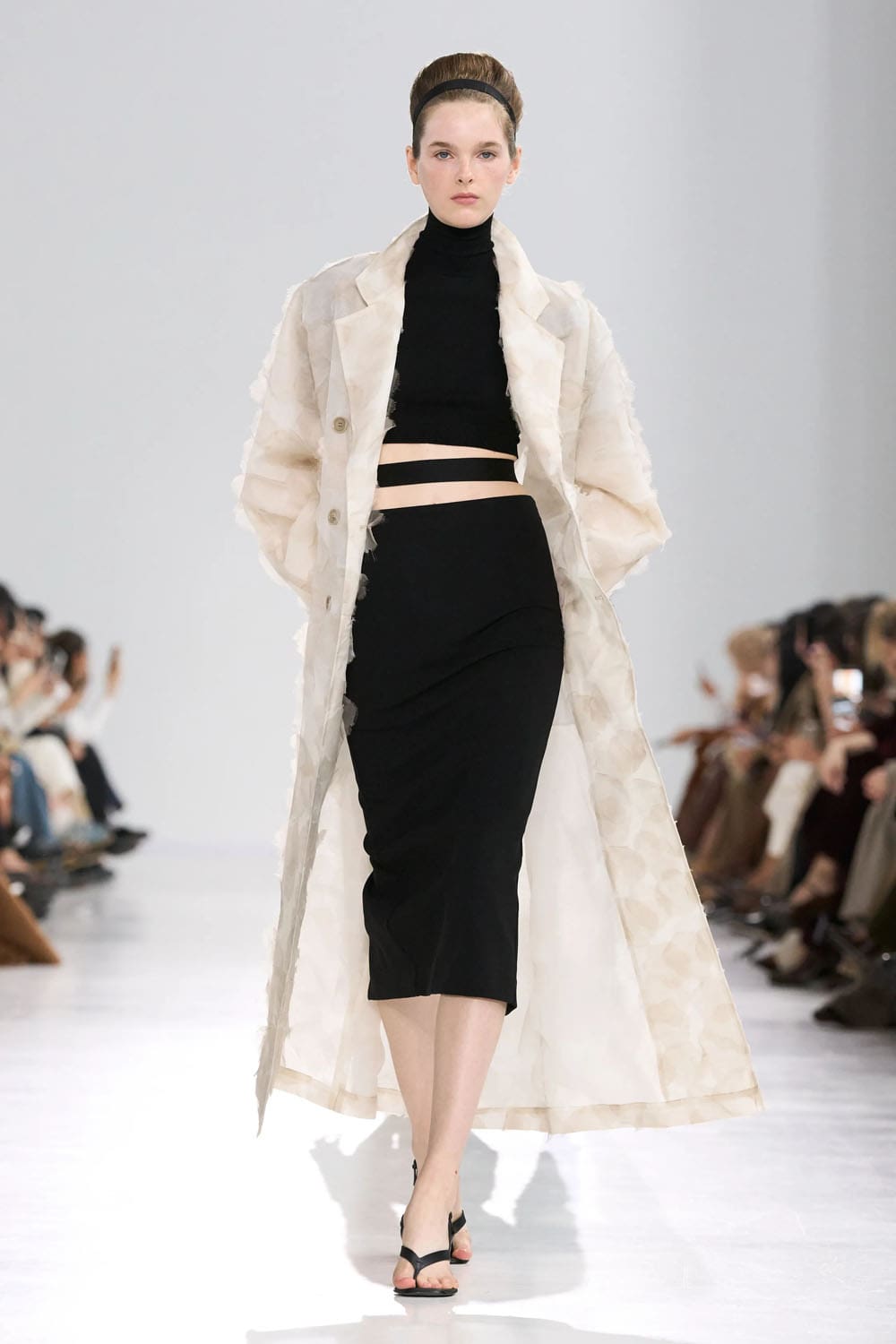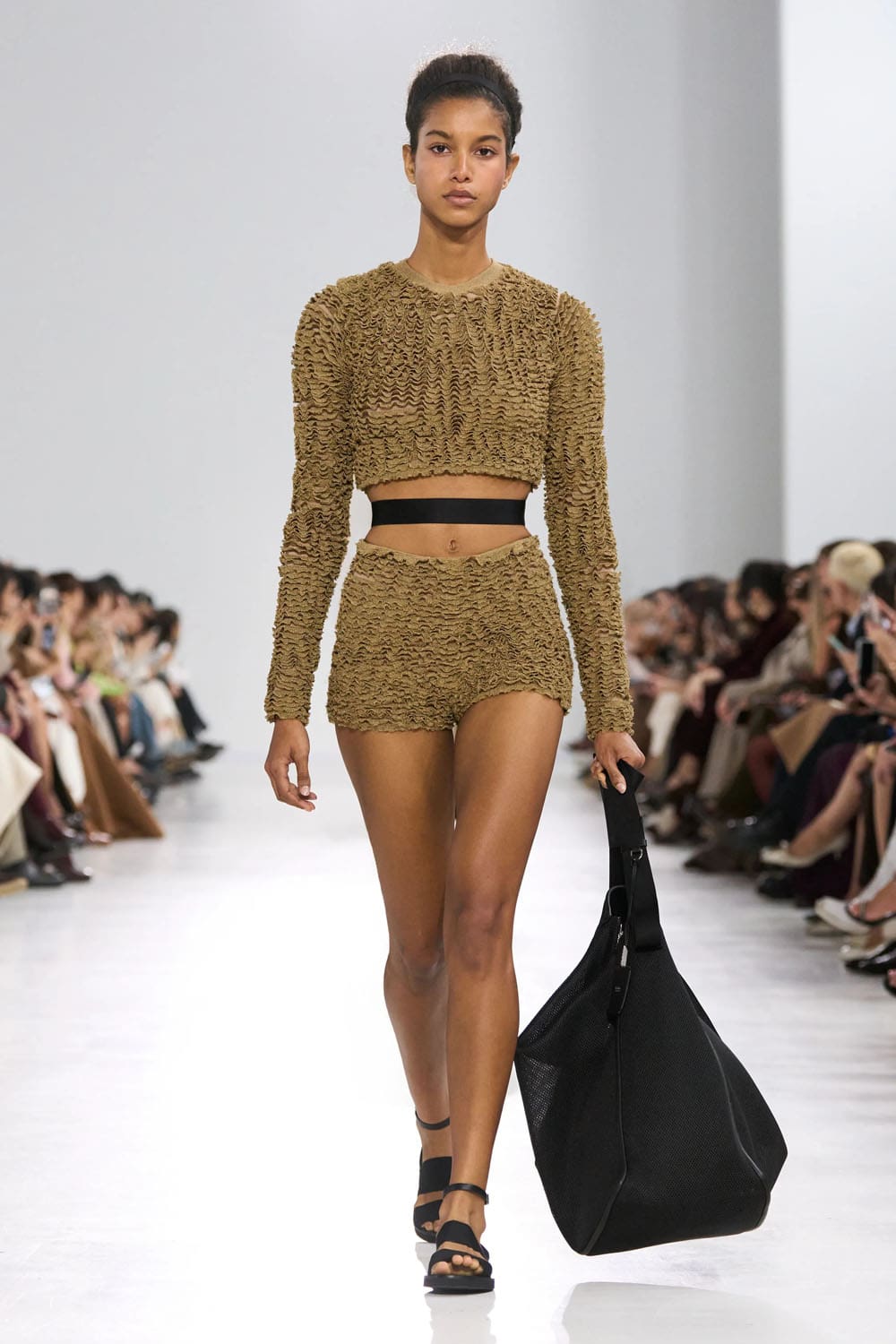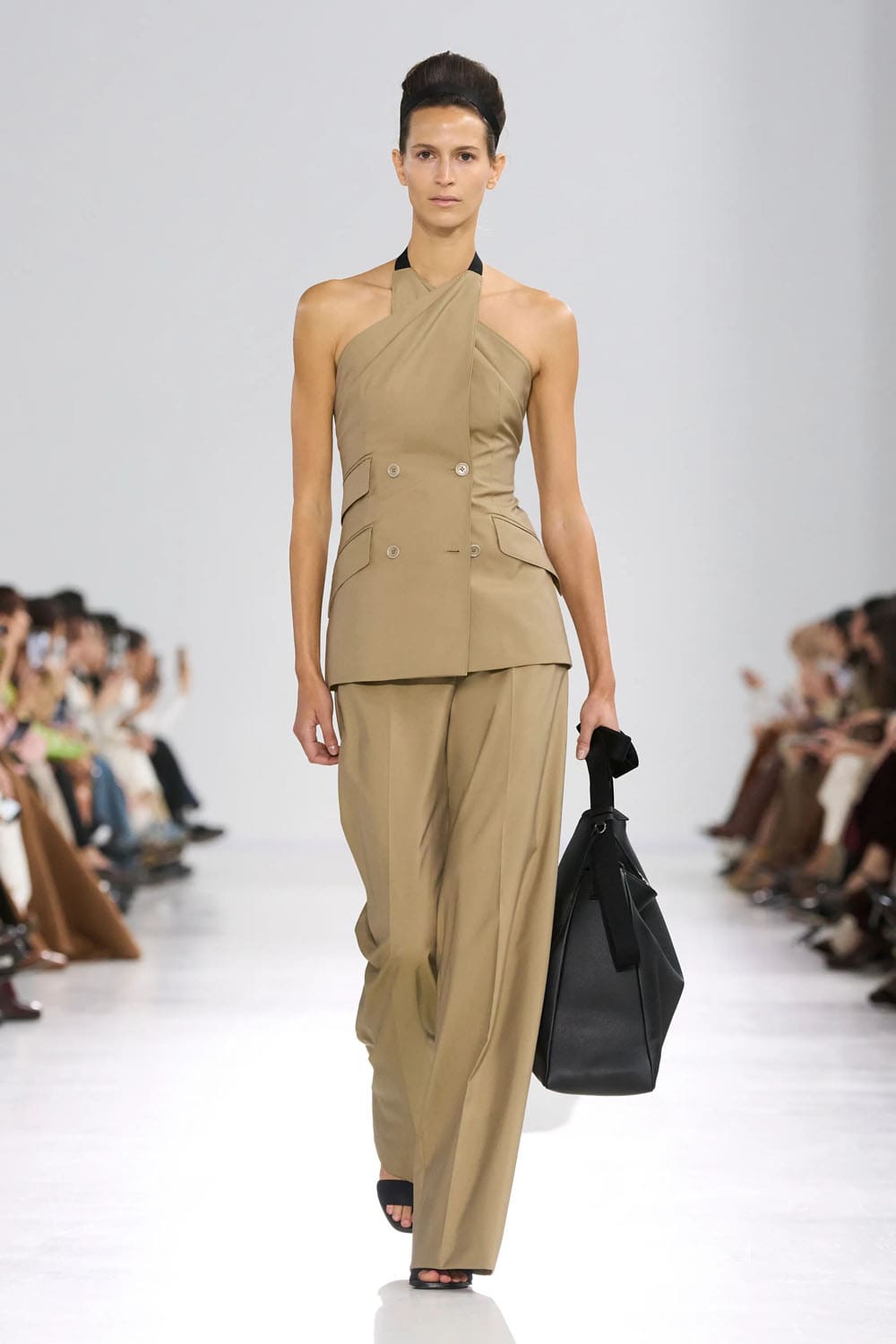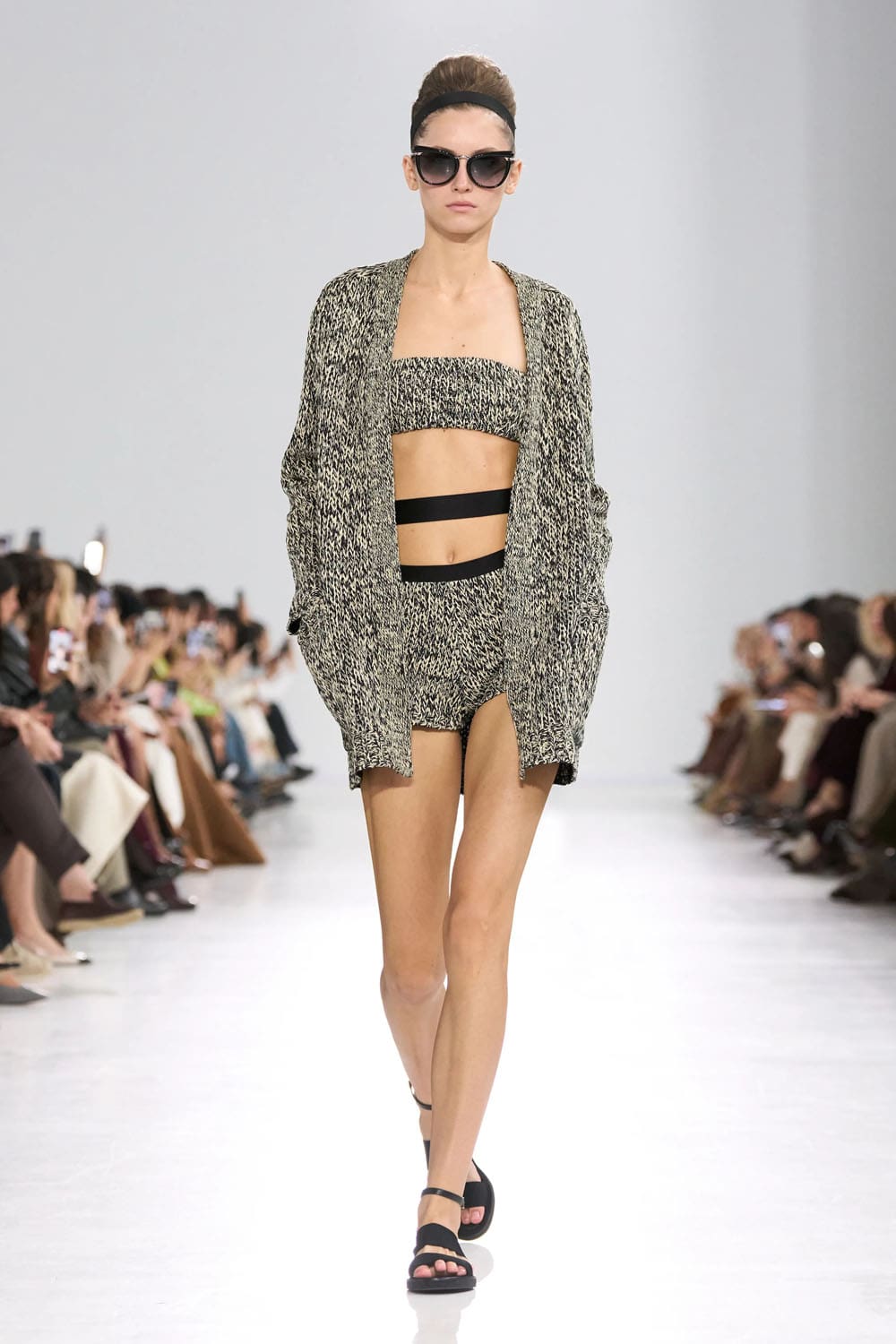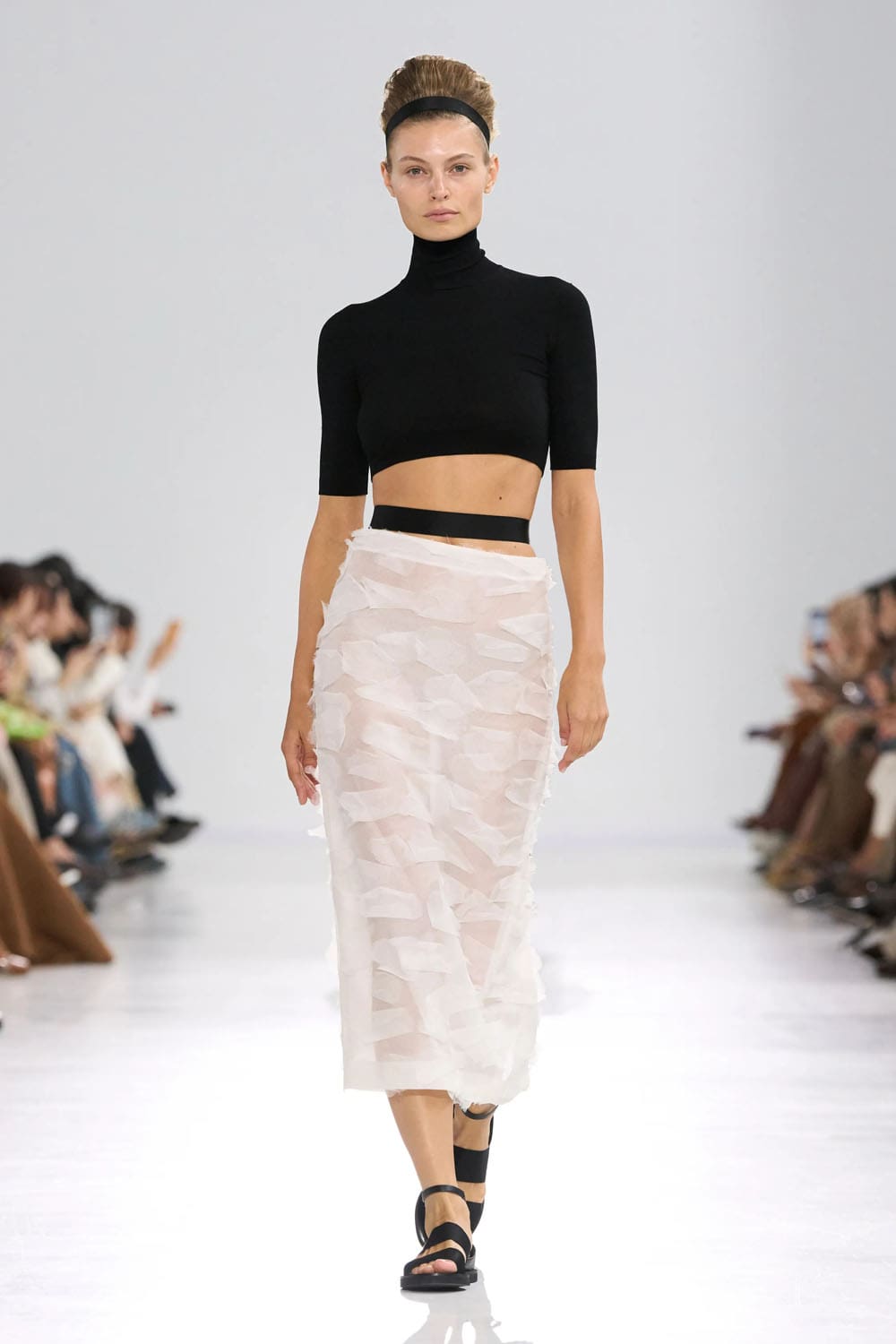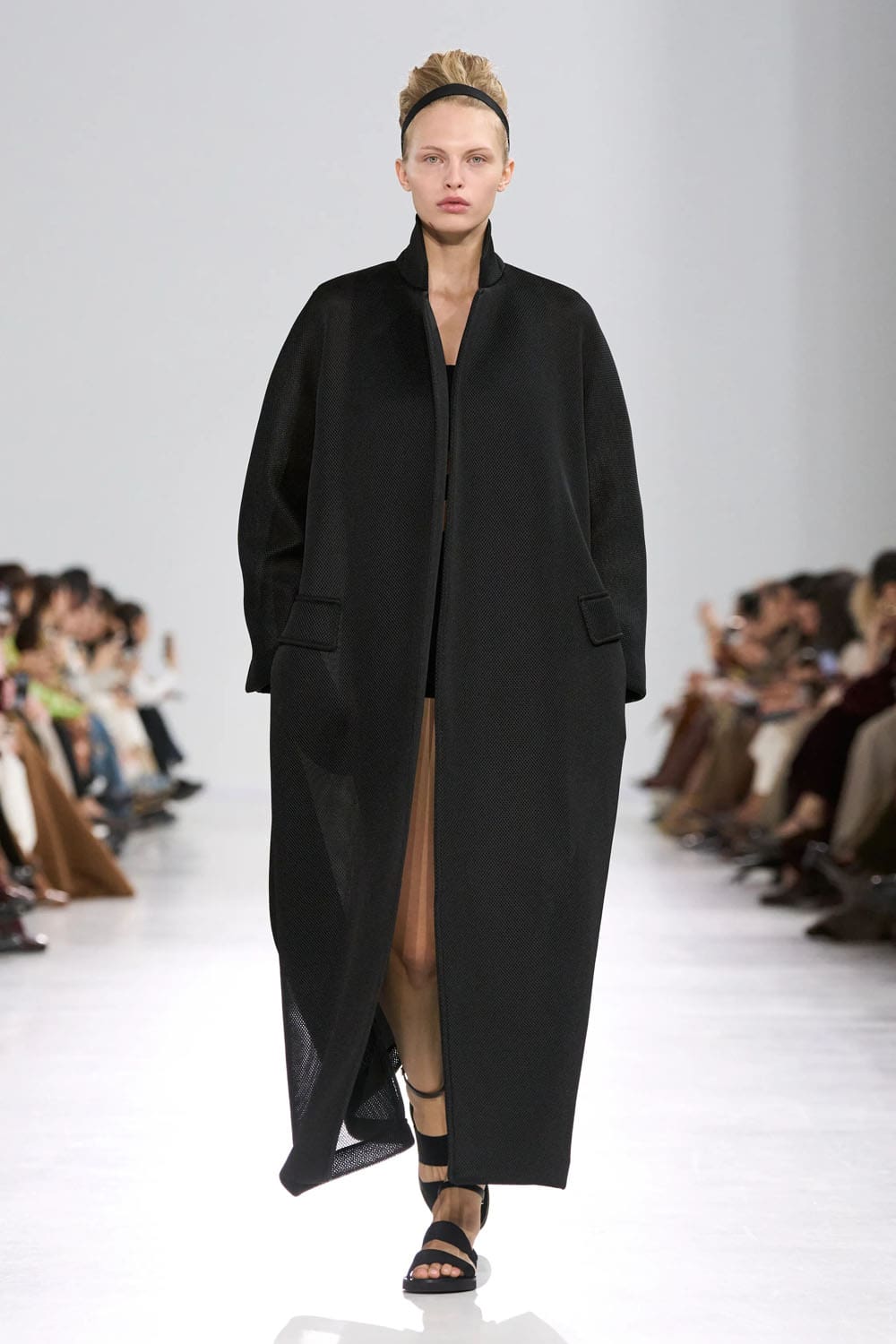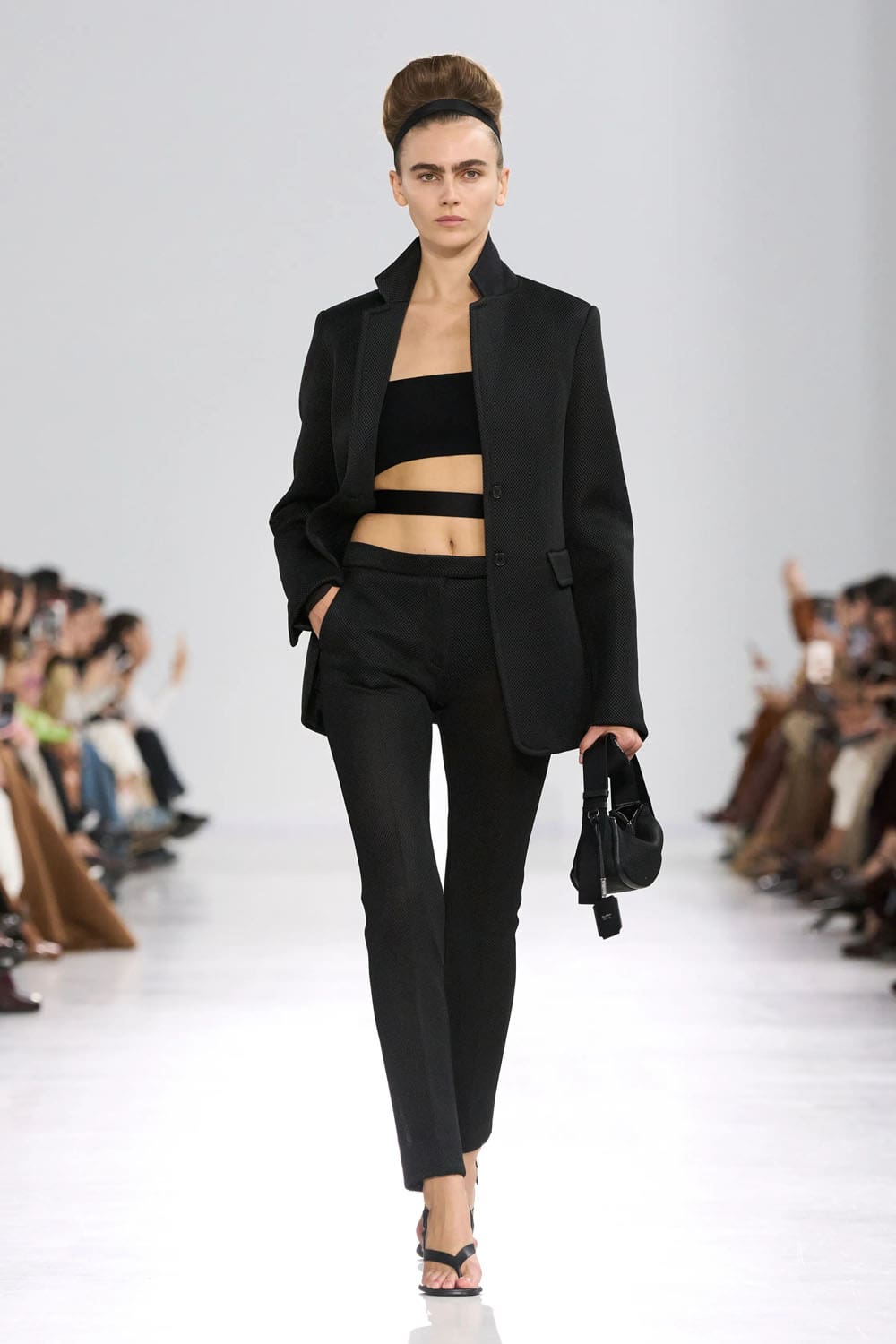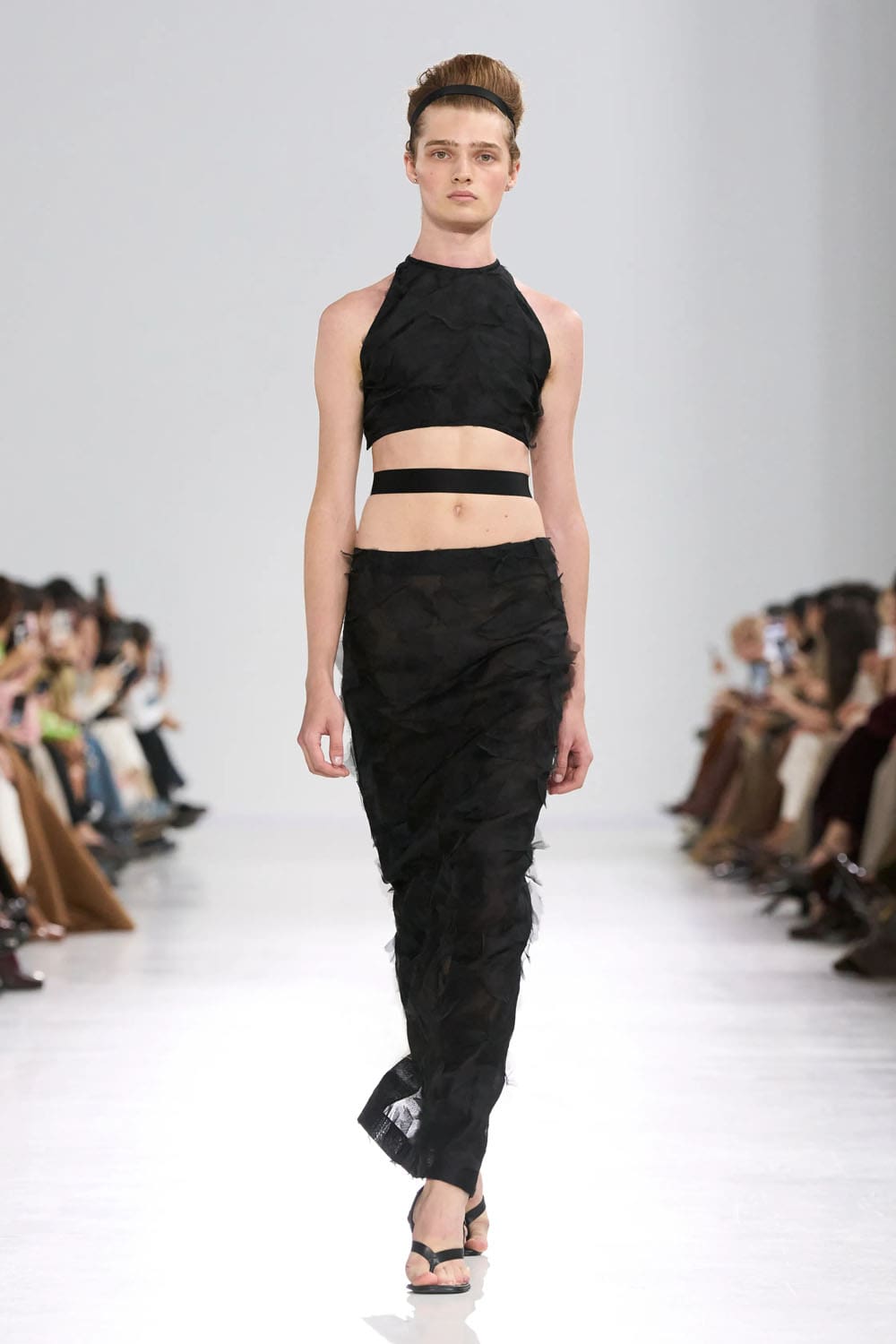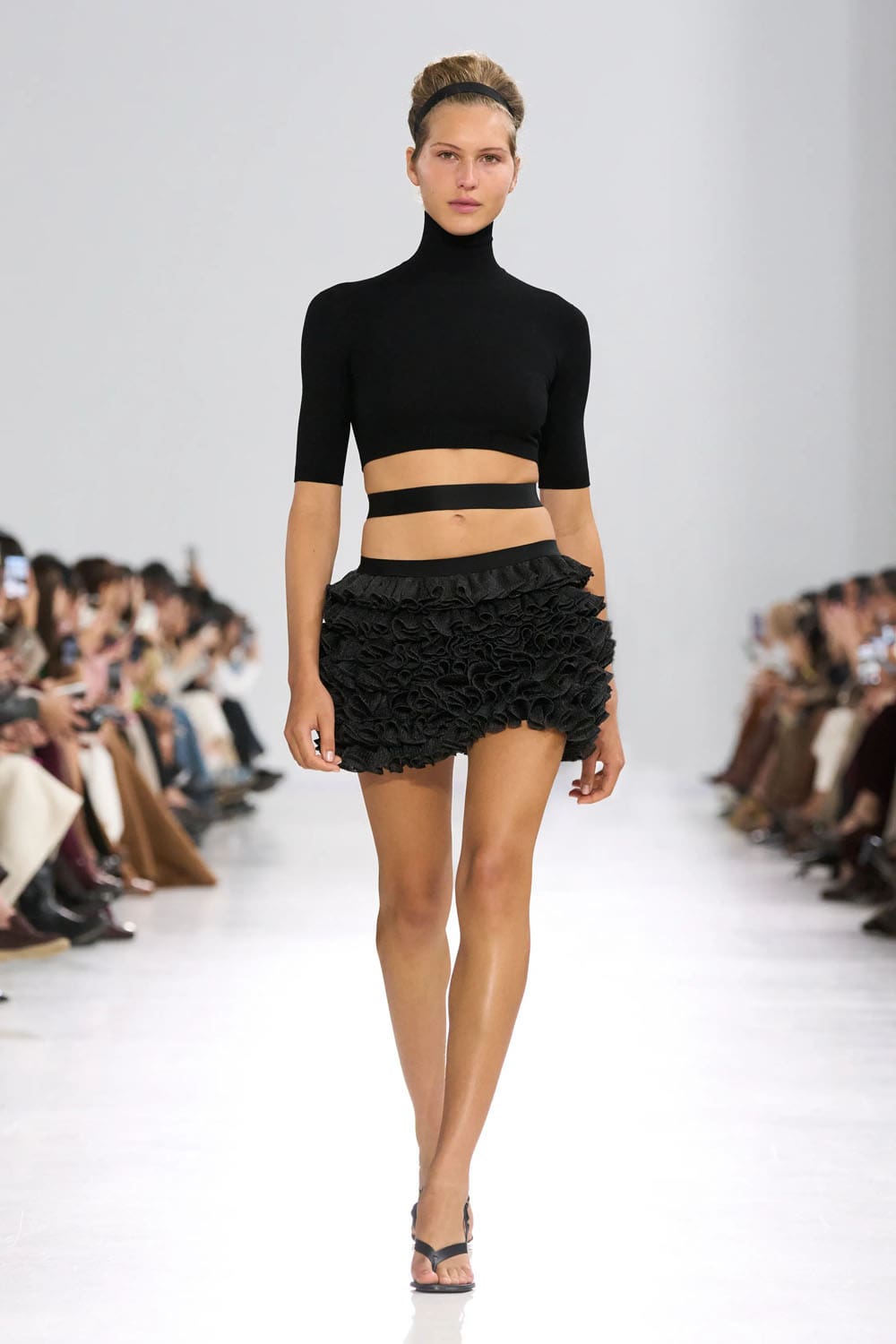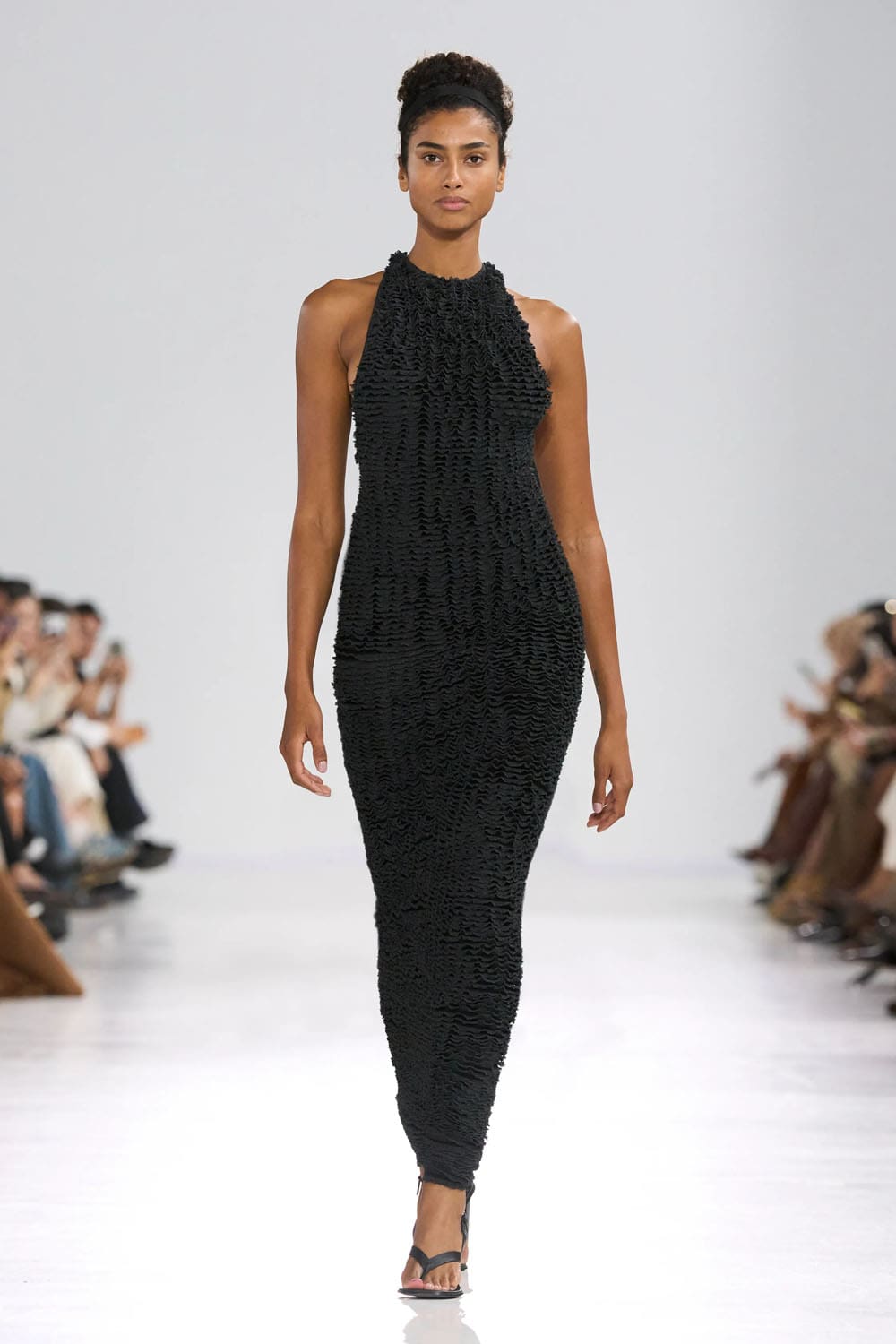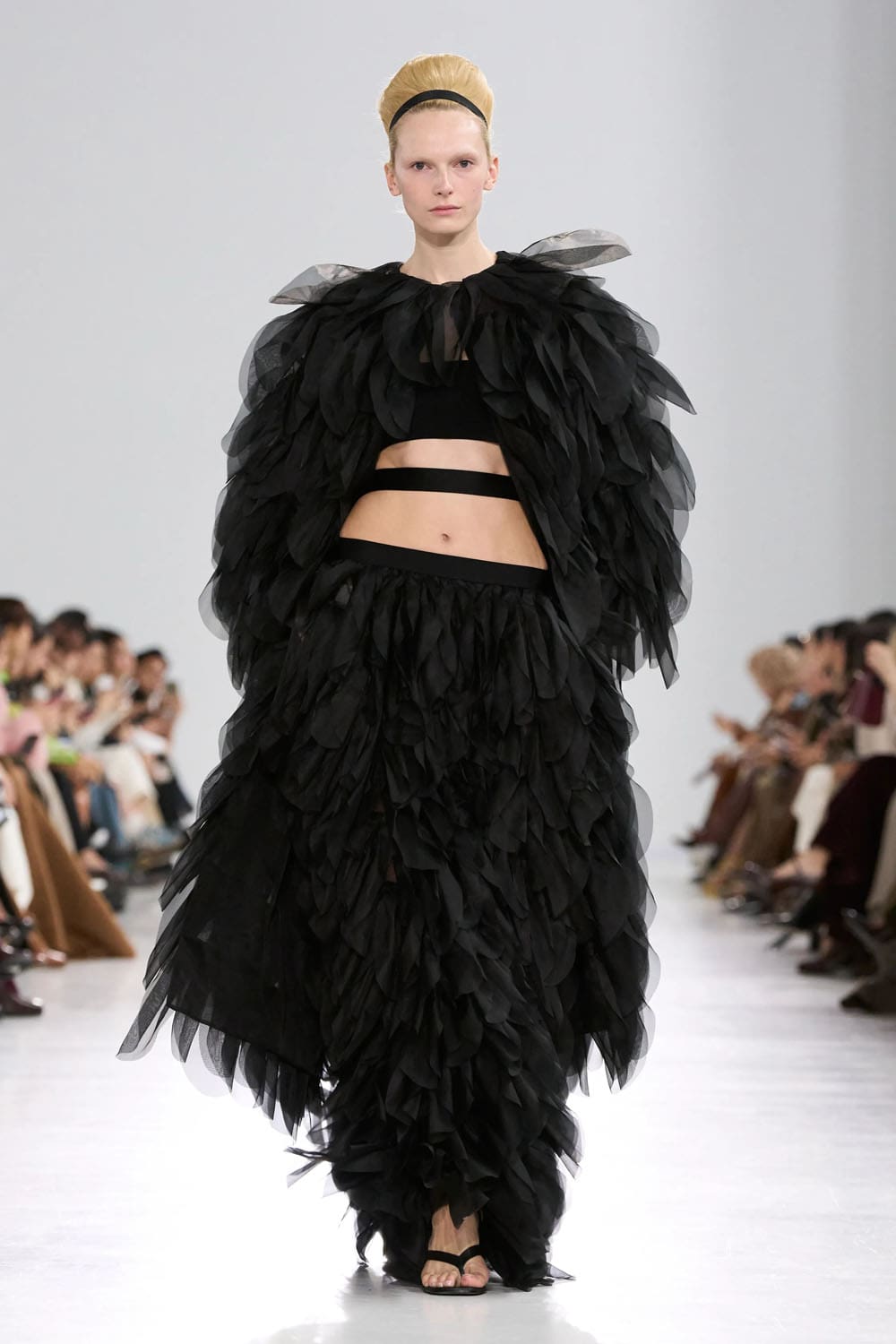Max Mara Spring Summer 2026 “Between Rigour and Rococo”. Story by Eleonora de Gray, Editor-in-Chief of RUNWAY MAGAZINE. Photo Courtesy: Max Mara.
Ian Griffiths continues to prove that Max Mara’s power lies in its ability to balance the pragmatic with the poetic. For Spring Summer 2026, the designer advanced a collection that was slick by marketing standards yet intellectually calibrated — a polished dialogue between the geometry of Victorian riding jackets, the grace of Japanese kimono, and a frothy flirtation with Rococo.
The reference points were not chosen casually. Griffiths’s moodboard queens included the late Elizabeth II in her Cecil Beaton portrait and Griffiths himself, circa 1980, dressed in the New Romantic uniform he had stitched on his mother’s sewing machine. That spirit of self-construction — clothing as performance, as authority, as escape — resurfaced here in a collection that places discipline against ornament.
Rococo as Catalyst, Not Dictator
Research for a Gainsborough House Museum talk pushed Griffiths to reconsider Rococo, not as mere 18th-century indulgence, but as a structural influence on his own 1980s sensibility. Its presence this season was precise rather than overwhelming: volutes of gauze spiraling from trench shoulders, Sevres-blue florals layered on silk and cotton, and chiffon petals stacked into coquette-leaning miniskirts. Yet Griffiths made clear — “you don’t want to let the theme wag the dog.” Rococo framed the story, but the narrative was written in tailoring.
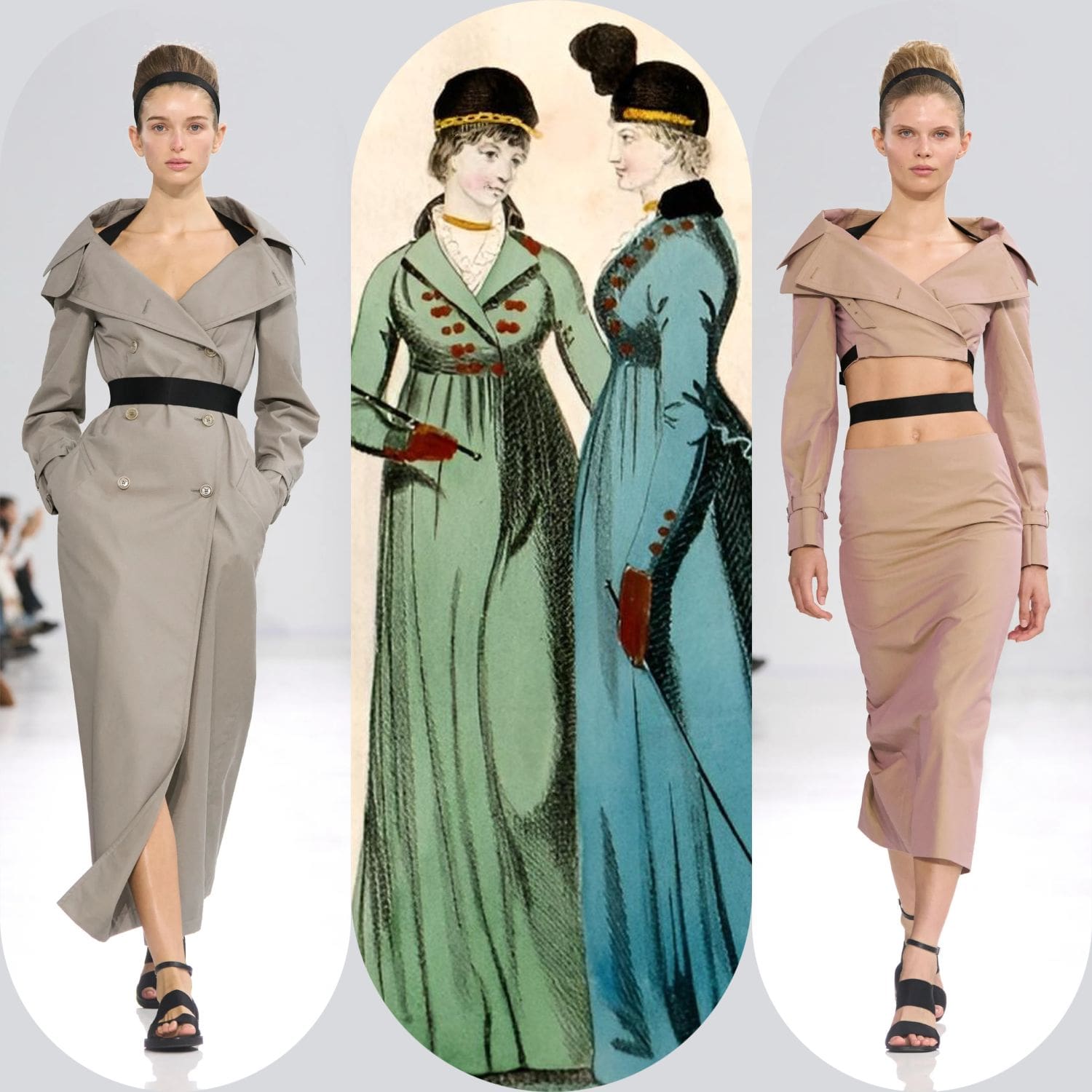
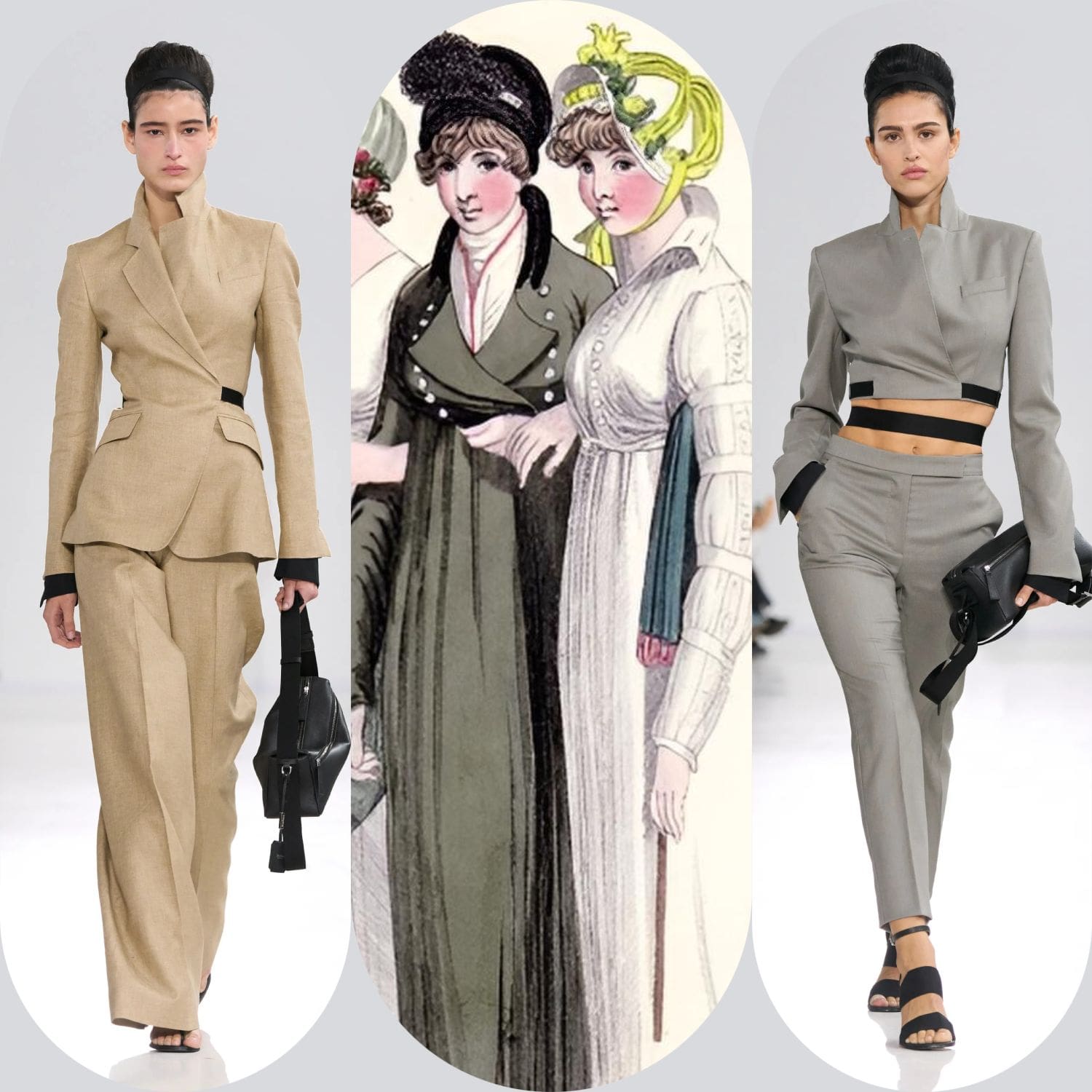
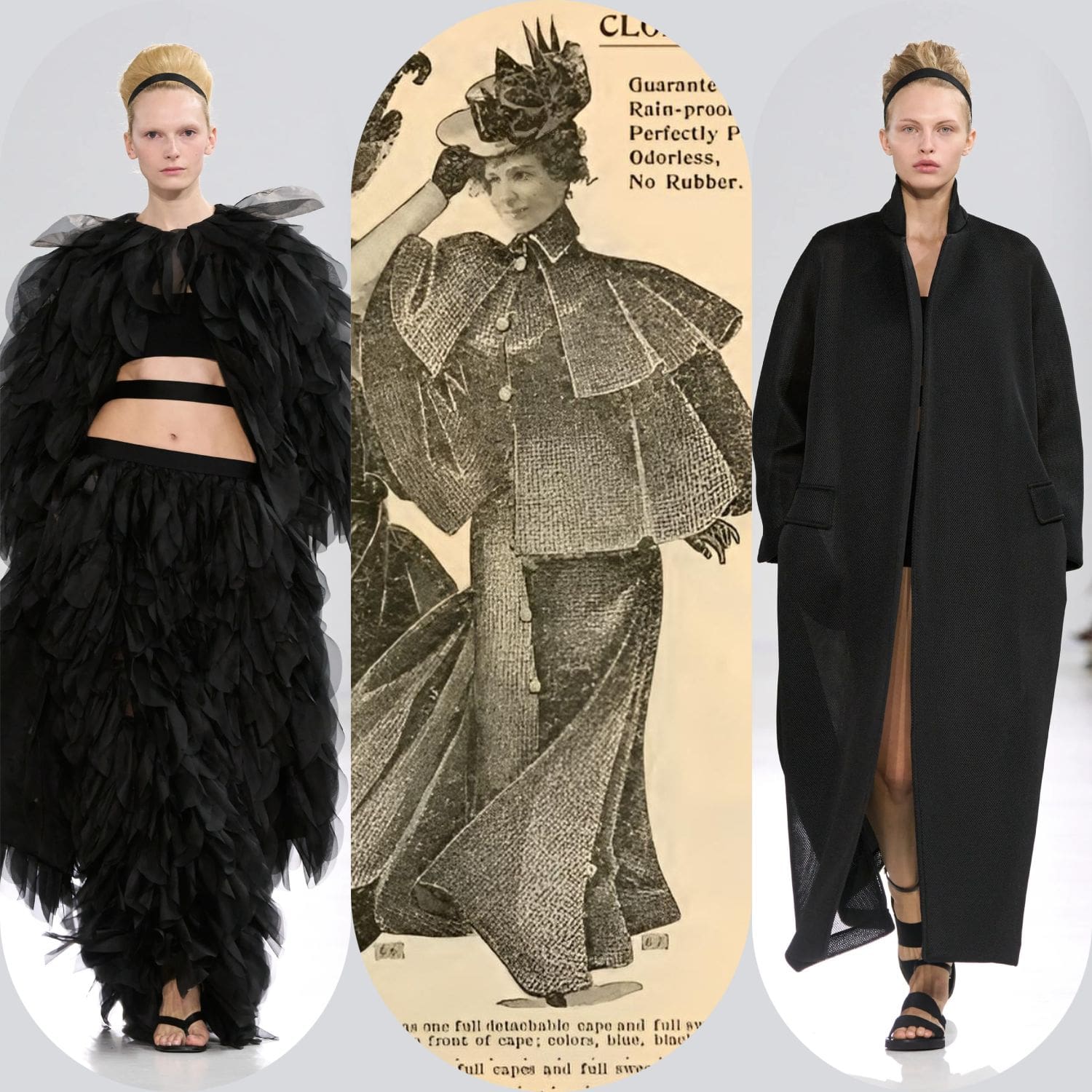
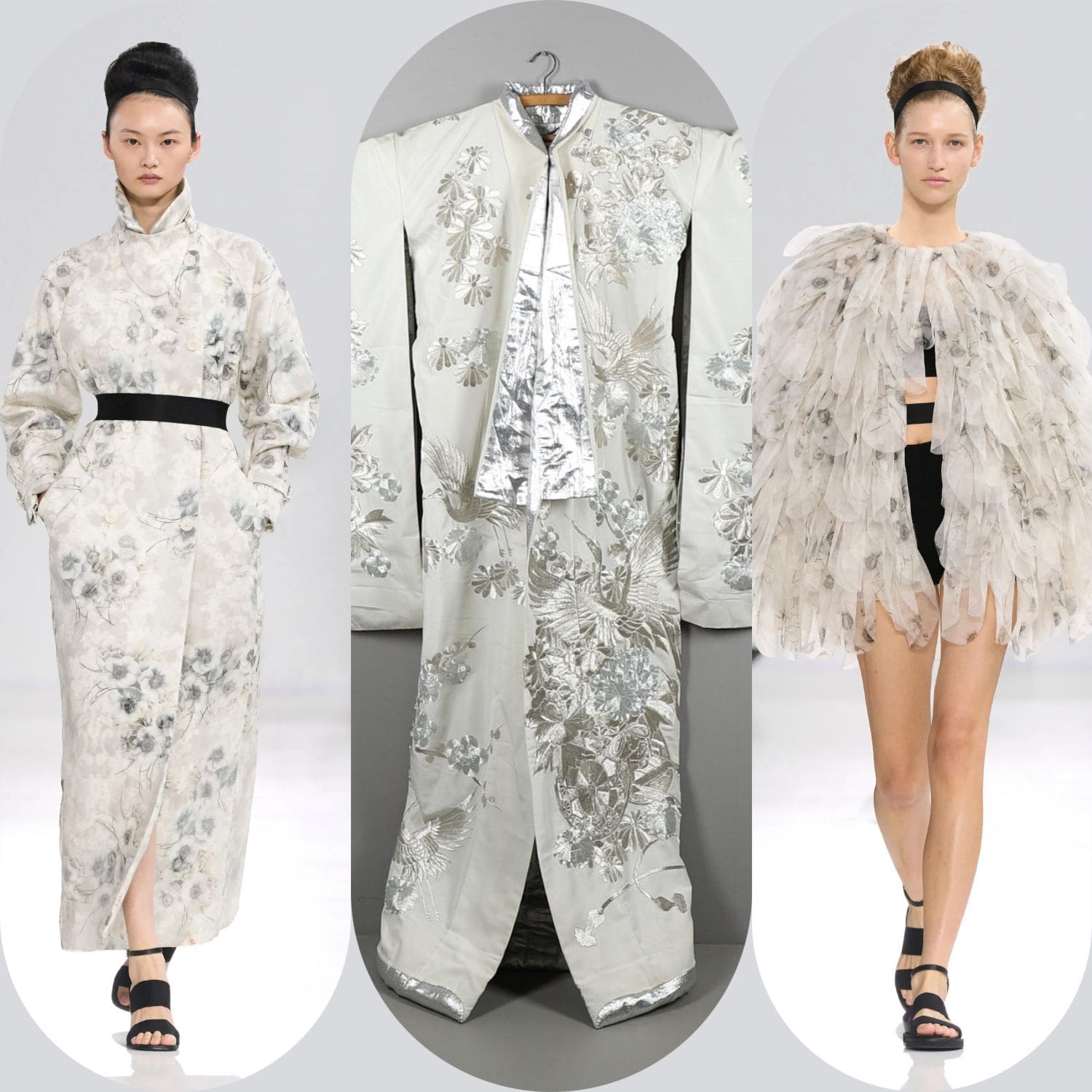
Tailoring as Spine
Nearly half the exits were suits, articulated in sharp variations: oversized spongy fabrics cut into louche proportions, trenches pulled apart into crop tops and pencil skirts, sweetheart necklines disrupting military silhouettes. This was Max Mara’s vocabulary — pragmatic, clear, yet sharpened with subversion. The rigor of tailoring collided with kimono-like fluidity, giving structure the illusion of lightness.
The Belt as Constraint
A recurring punctuation came at the midriff: black elastic belts, slim and unyielding. On the runway, they played as a dash of kink — a restraint line bisecting chiffon flounces and Rococo froth. Griffiths’s realism was evident; these belts may not translate easily into wardrobes beyond the runway, but as visual metaphor, they reinforced the season’s core tension between discipline and excess.
Closing Gesture
The finale captured the thesis: a knitted, flounce-laden column, severe yet playful, followed by a black silk petal ensemble that opened the waistline to light and air. It was the same dialectic Griffiths has long pursued — a Max Mara woman whose authority is never without grace, and whose elegance is shaped not by nostalgia but by structural invention.
Spring Summer 2026 shows Max Mara at its most intelligent: where Rococo becomes strategy, where kimono and riding jacket converge, and where rigor learns the art of fluidity.
See All Looks Max Mara Spring Summer 2026




